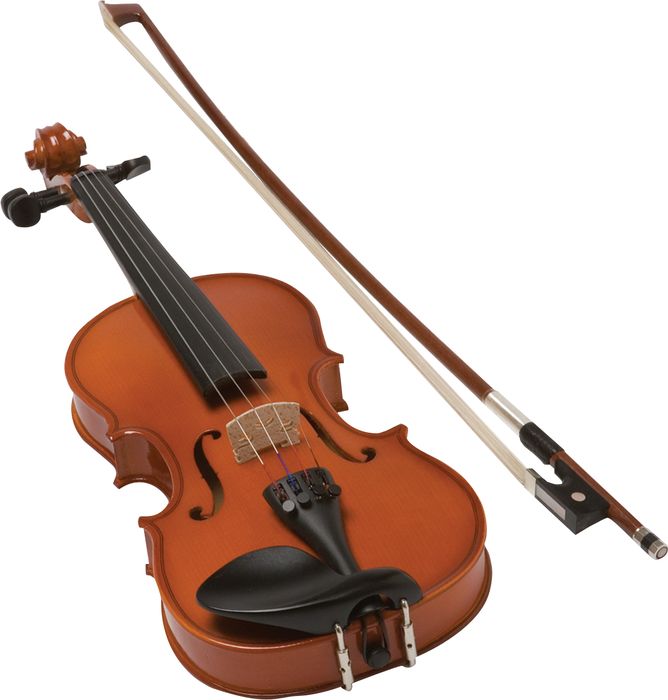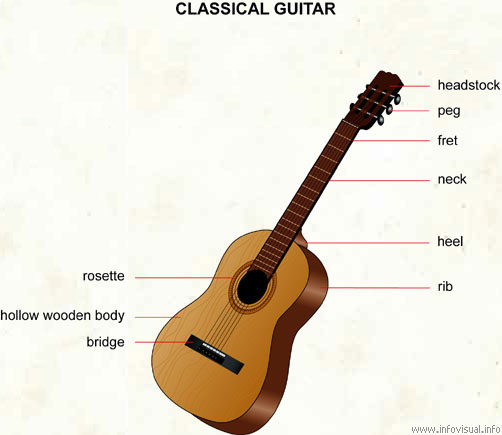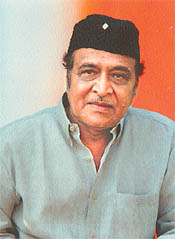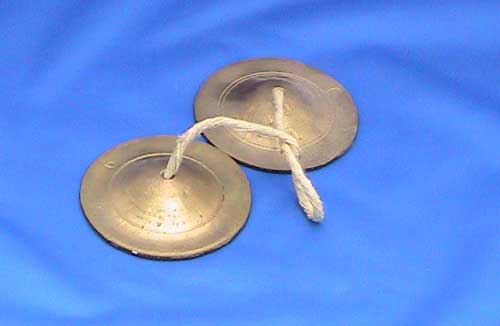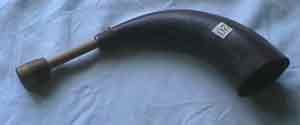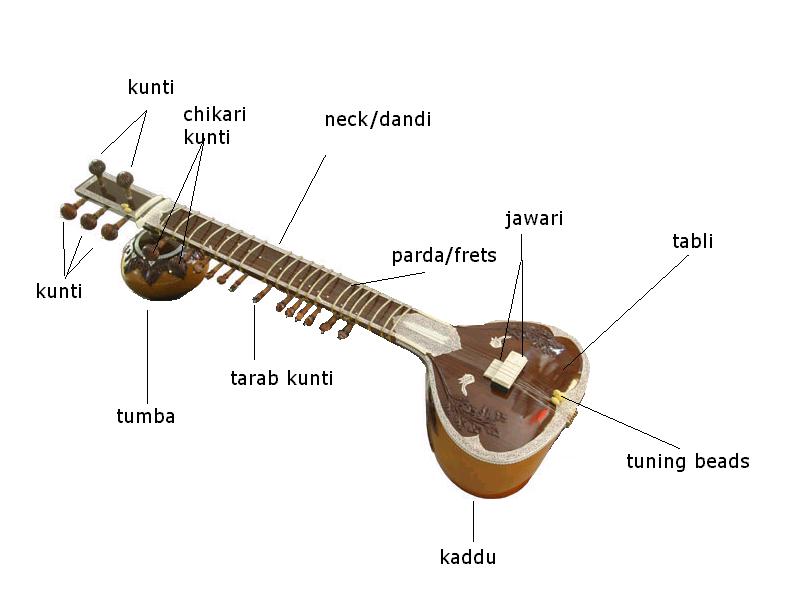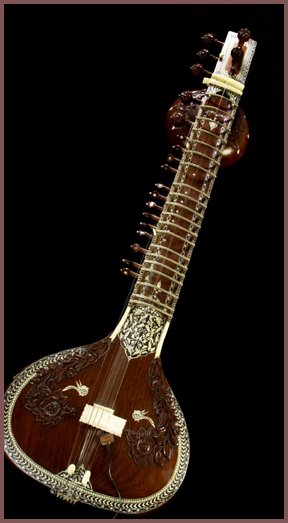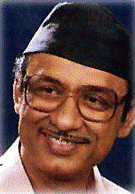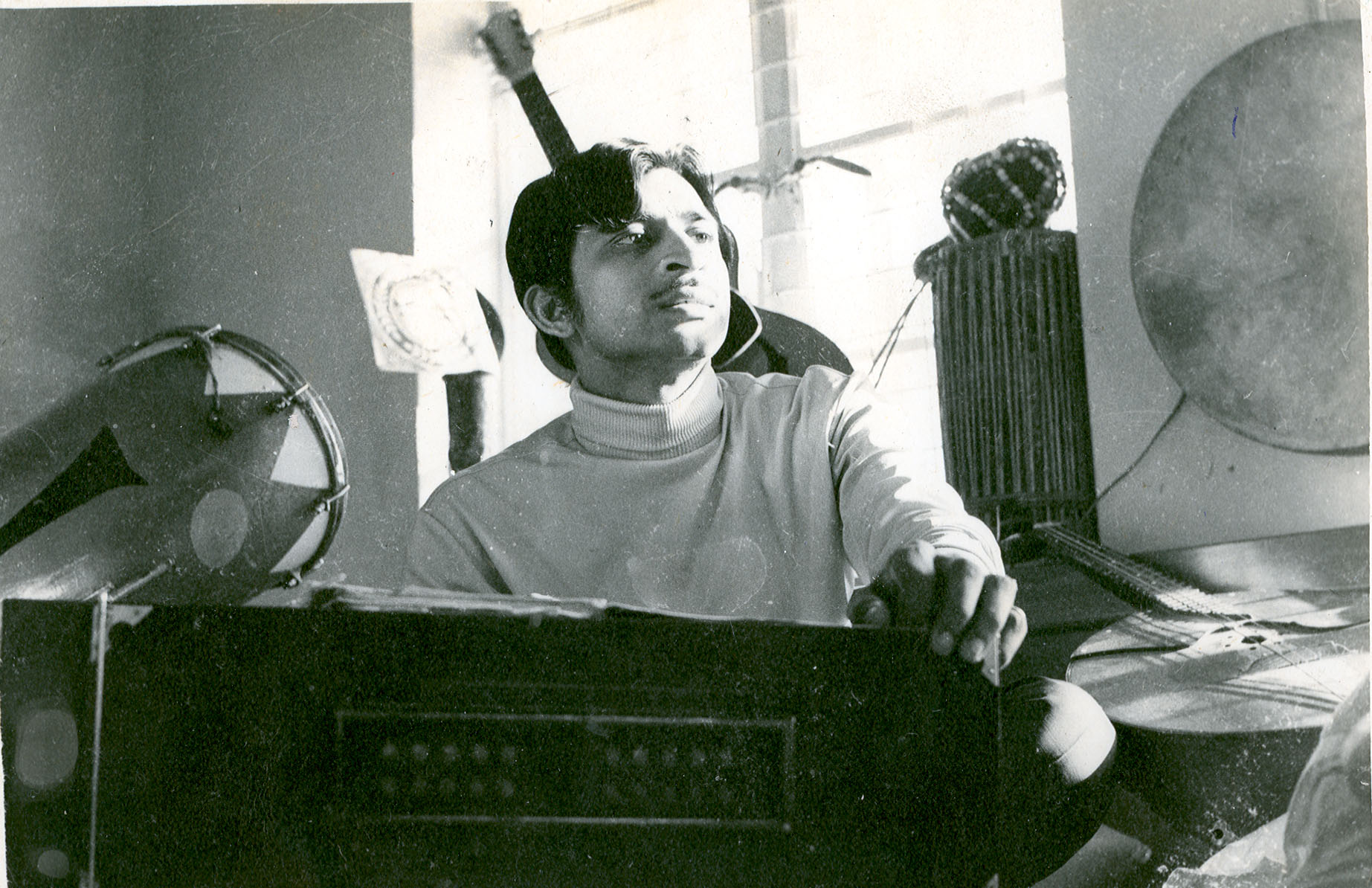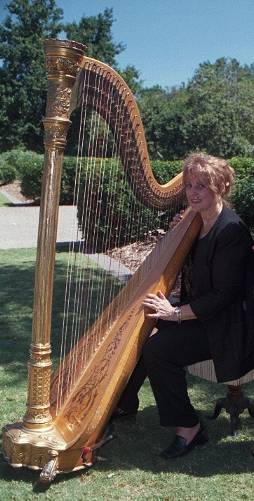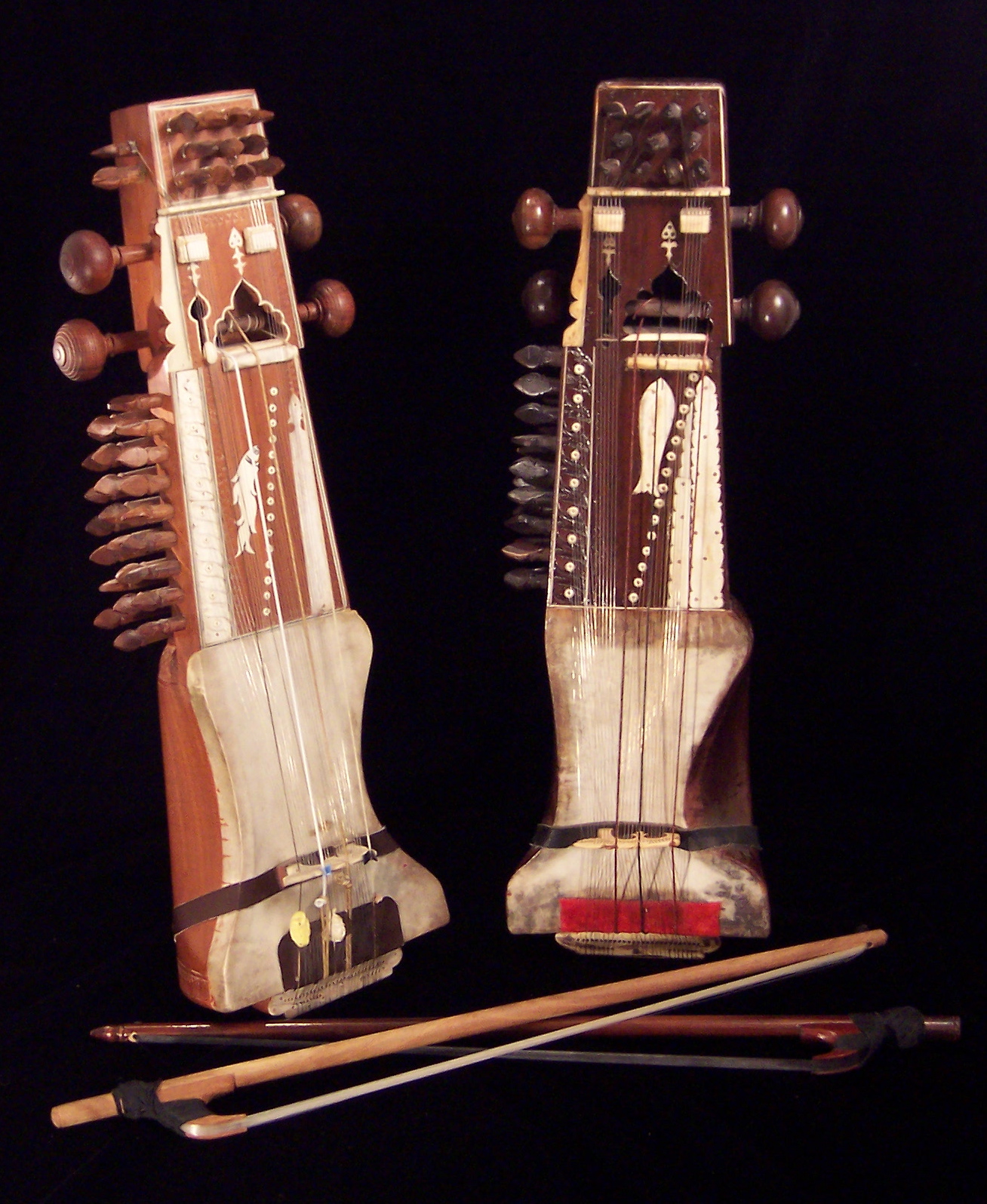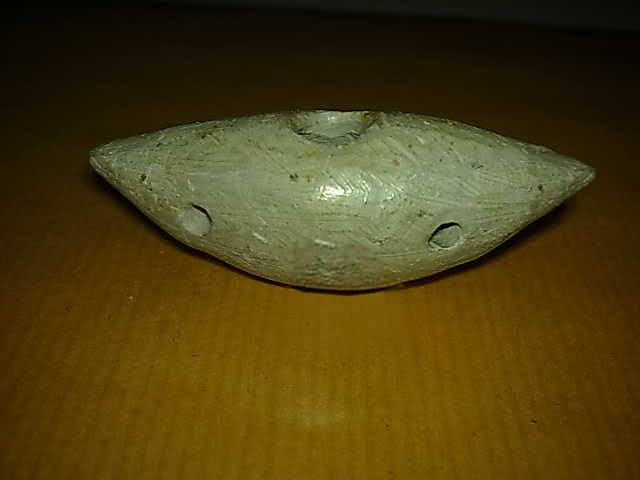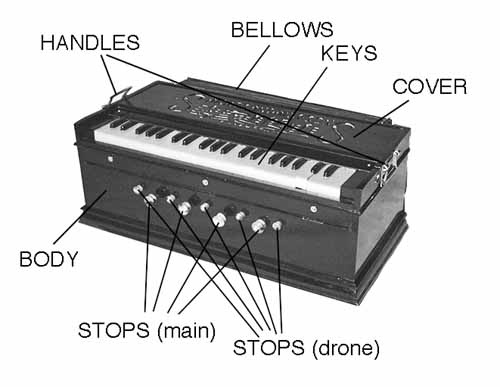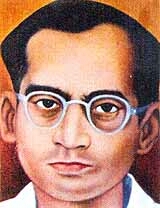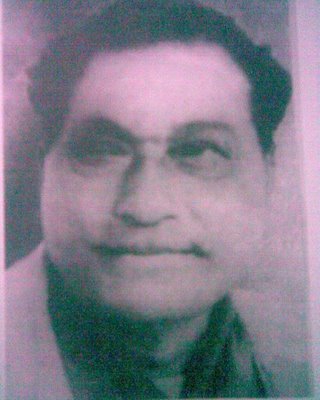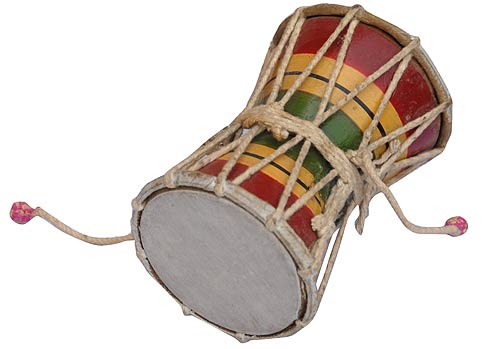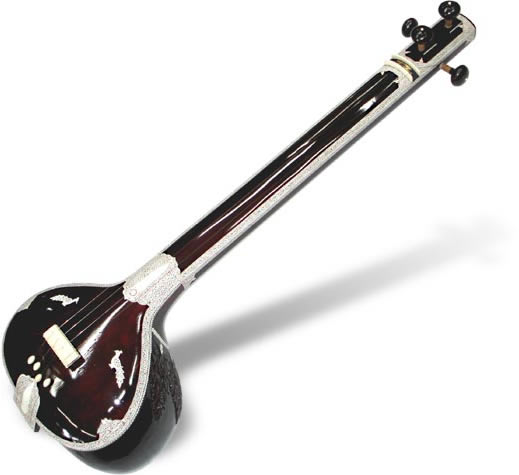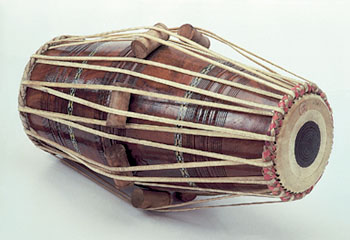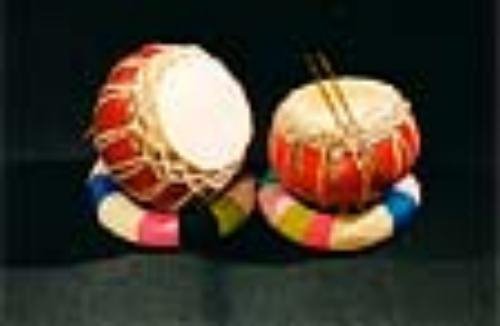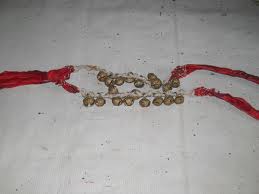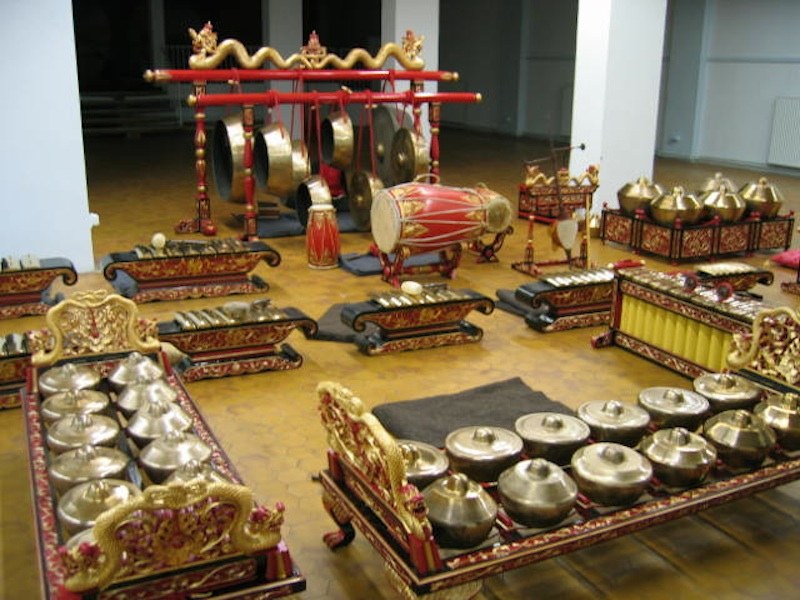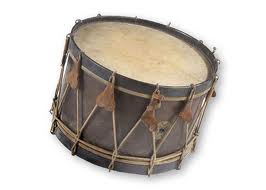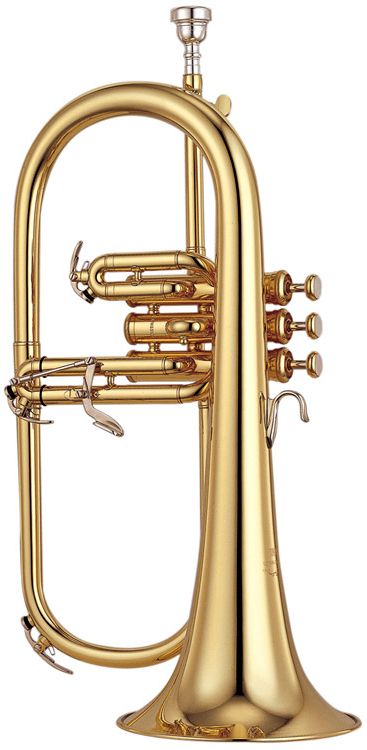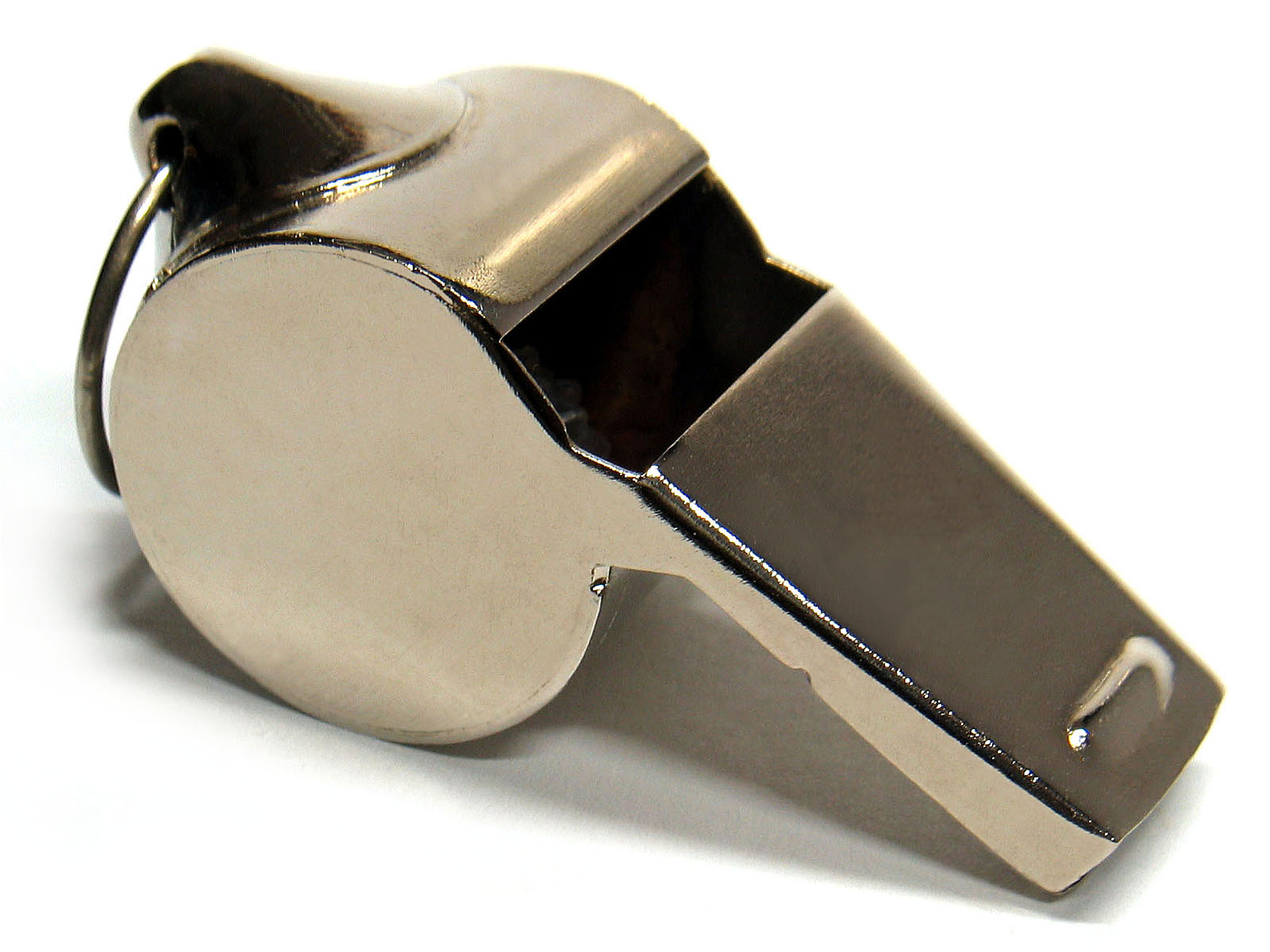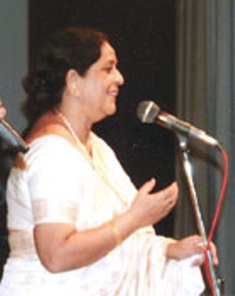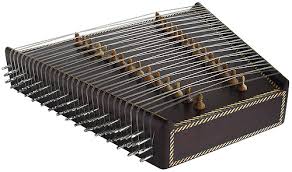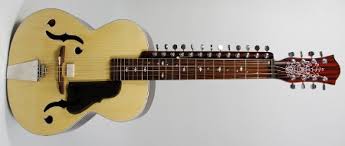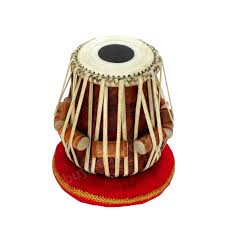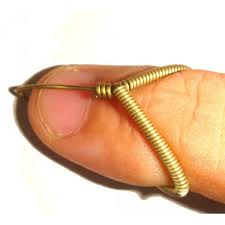Items in Music
1. Music(Material Noun-Neuter) a musical wind instrument consisting of a tube with a series of fingerholes or keys ফুৱাই বজোৱা এক প্ৰকাৰ বাদ্য যন্ত্ৰ, যি কেইবাটাও ফুটা থকা এডাল নলীৰে (সাধাৰণতে বাঁহৰ) নিৰ্মিত
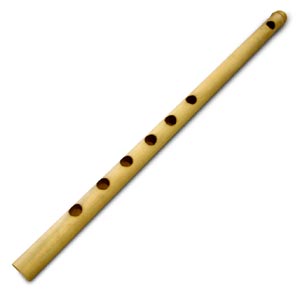
Assamese: বংশী, বাঁশৰী, বাঁহী, বেণু, মুৰলী, মুৰুলী,
Mising: pu:li,
Khasi: ka besli,
Garo: bangsi,
Meeteilon: pena,
Bishnupriya Manipuri: বাঁশী,
Mizo (Lushai): phênglâwng,
Karbi: pongsi,
Dimasa: suphin,
Tai: পী,
Hindi: बाँसुरी,
Deori: য়ুবুঁ,
Santali: tirio
2. PersonalitiesMusic(Proper Noun-Masculine) Parvati Prasad Baruva was born on August 19, 1904 near the banks of the Dikhow River in Sibsagar, Assam. He received his early education at Phuleswari School. His interest in the arts, music and drama were also nurtured during his childhood. At the age of ten, he played the part of Joymoti, in a play staged by the local theater group. He did this for several years and received lots of prizes for his performance. After matriculation in 1921, Parvati Prasad did his Intermediate in Science from Cotton College, Guwahati. During this period, he became very interested in the songs of Nobel laureate Kabiguru Rabindra Nath Tagore. Parvati Prasad began his career at his maternal uncle’s Sarusarai T.E. as an apprentice. He continued his pursuit of music and drama along with his career. During this period, he composed two dance dramas, ‘Lakhimi’ and ‘Sonar Soleng.’ In 1940, he produced, directed and acted in the 4th Assamese movie, Rupohi. During his lifetime, Parvati Prasad published three books of his songs. They are the following: Gungunani, Luiti, Sukula Dawor Oi Kohuwa Phul. After his death, two more previously unpublished works were included in the Parvati Prasad Baruva Rasanawali. অসমীয়া গীত-কবিতাৰ স্ৰষ্টা পাৰ্বতি প্ৰসাদ বৰুৱাৰ জন্ম হয় ১৯০৪ চনৰ ১৯ আগষ্ট তাৰিখে শিৱসাগৰ জিলাত৷ ১৯২১ চনত কটন কলেজৰ বিজ্ঞান শাখাত নামভৰ্তি কৰাৰ সময়তে ৰবীন্দ্ৰনাথ ঠাকুৰৰ গীতৰ প্ৰতি আকৰ্ষিত হয় আৰু তাৰ পিছতে তেওঁৰ মনত সংগীত সাধনাৰ সপোনটোৱে পোখা মেলে৷ ইয়াৰ পিছত উচ্চ শিক্ষাৰ বাবে কলিকতালৈ যায় আৰু সেই সময়তে শিৱসাগৰৰ নাট্যমঞ্চত সঙ্গীত পৰিবেশনৰ পাতনি মেলে৷ পিছলৈ বাগিচাৰ কামত কৰ্মজীৱন আৰম্ভ কৰে৷ এই সময়তে তেওঁ নৃত্যনাটিকা ‘লখিমী’ আৰু গীতি-নাটিকা ‘সোণৰ সোলেং’ ৰচনা কৰে৷ অসমীয়া সংগীত-সাহিত্যৰ নৱজাগৰণৰ সময়ত পাৰ্বতি প্ৰসাদে ৰচিছিল ‘গুণগুণনি’, ‘লুইতী’, ‘শুকুলা ডাৱৰ ঐ কঁহুৱা ফুল’ আদি গীতৰ পুথি৷ গীত ৰচনাৰ উপৰিও ১৯৪০ চনত চতুৰ্থখন অসমীয়া কথাছবি ‘ৰূপহী’ নিৰ্মাণ কৰে৷ ১৯৬৪ চনত দুবাৰকৈ ৰক্তচাপত ভোগাৰ ফলত তেওঁ ৭ জুনৰ দিনা ইহলীলা সম্বৰণ কৰে৷
3. Music(Abstract Noun) the sequence of tones that a piece of music principally uses সংগীতত ব্যৱহৃত সুৰৰ একোটা নিৰ্দ্দিষ্ট ধাৰা
4. Music(Common Noun-Masculine) One who sings, especially a trained or professional one যি গীত গায়, বিশেষকৈ যি এই বিষয়ে প্ৰশিক্ষণ-প্ৰাপ্ত বা পেছাদাৰী
Assamese: কণ্ঠশিল্পী, গাওঁতা, গানুৱা, গায়ক, গীতাল,
Bodo: मेथाइ खनग्रा, मेथाइ रोजाबग्रा,
Meeteilon: sheishakpa,
Karbi: Lunse, lunsepo,
Nagamese: ganuwar,
Dimasa: rajabyah,
Deori: চাজেয়া
Opp. Gender:
a. Common Noun-Feminine: গায়িকা, sheishakpi, lunsepi...Related Idea:
b. Verb-Intran.: sing, গা, গীত পৰিৱেশন কৰ্, खन, मेथाइ खन...Sub Idea:
c. Common Noun-Masculine: গায়ন, বৈতালিক, স্তুতি-পাঠক...
5. MusicCustoms(Abstract Noun) a poem, play, or the like, dealing with the life of shepherds, commonly in a conventional or artificial manner, or with simple rural life generally গাৱলীয়া জীৱন যাত্ৰাৰ ওপৰত ভিত্তি কৰি ৰচা কোনো পদ্য, গীত আদি৷
6. Music(Material Noun-Neuter) A pair of cymbals made of Bell-metal which used in traditional Assamese prayer called “Nam”. This musical instrument is manufactured in Sarthebari.
Assamese: ভোৰতাল
Related Idea:
a. Material Noun-Neuter: cymbal, তাল, চেং-চেং, চ্চেং-চ্চেং, ঝুৰি...
7. Music(Material Noun-Neuter) a member of the percussion group of musical instrument, technically classified as a membranophone. It consists of at least one membrane, called a drumhead or drum skin, that is stretched over a shell and struck, either directly with parts of a player's body, or with some sort of implement such as a drumstick, to produce sound. Drums are the world's oldest and most ubiquitous musical instruments, and the basic design has remained virtually unchanged for thousands of years.
হাত বা মাৰিৰে আঘাট কৰি বজোৱা বাদ্যযন্ত্ৰ।
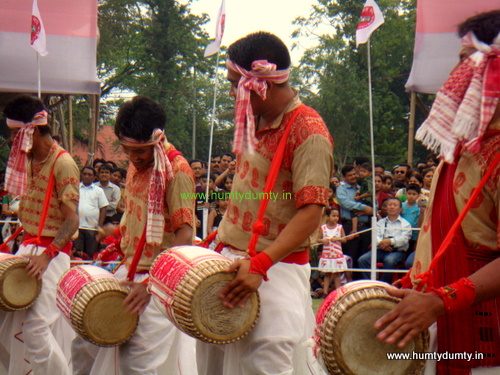
Assamese: ঢোল, মৃদং, মৃদঙ্গ,
Bodo: दल, खाम,
Mising: dumdum,
Garo: dama,
Meeteilon: dholok,
Mizo (Lushai): khuang,
Karbi: Cheng,
Nagamese: dhal, dhol,
Dimasa: khram,
Tiwa: khram,
Deori: দুৰুম
Sub Idea:
a. Material Noun-Neuter: drum, খোল, pung, ingtongpo...
8. Music(Abstract Noun) a group of people or instruments producing music in unison বহুতো মানুহ বা বাদ্য-যন্ত্ৰই একেলগে সৃষ্টি কৰা সঙ্গীত
Assamese: কোৰাছ, বৃন্দগান, সমবেত সংগীত, সমস্বৰ, সমৰোল,
Dimasa: koras, rjabsmai,
Bangla: কোরাস, বৃন্দগান, সমবেতসঙ্গীত
9. Music(Abstract Noun) A song sung to celebrate a god or a religious leader ভগৱান বা ধৰ্মীয় নেতাৰ গুণ বখানি গোৱা গীত
10. Music(Abstract Noun) a genre of music that evolved in New Orleans in the early 20th century বিংশ শতিকাৰ আগভাগত আমেৰিকাৰ নিউ অৰ্লিন্ছত জন্ম লোৱা এক বিশেষ সঙ্গীত শৈলী। বিভিন্ন বাদ্যযন্ত্ৰ সম্বলিত এই সঙ্গীতশৈলী তাৰ ছন্দোময়তাৰ বাবে কালক্ৰমত সমগ্ৰ বিশ্বতে জনপ্ৰিয় হৈছে।
Assamese: জাজ সঙ্গীত, জেজ, জেজ সঙ্গীত,
Bodo: जास, बाब्राबबाइनानै मोसानाय,
Karbi: jaj,
Dimasa: jaj
11. Music(Material Noun-Neuter) Stringed instrument with four strings played with a bow
12. Music(Material Noun-Neuter) an Indian musical instrument devided into two parts. The right part, called dyna, is made of a hollow wooden frame covered with leather. The left part, called bayan or dugi, wider in size, is a round hollow structure made of earth or steel and covered with leather. Played with fingers of both the hands. Used both as a solo and accompanying instrument. ভাৰতীয় সংগীতত ব্যৱহাৰ হোৱা এবিধ অবনদ্ধ বাদ্য| দুভাগত বিভক্ত-ডুগী আৰু দাইনা|একক বাদন আৰু সংগত-দুয়োটাতে ব্যৱহাৰ হয়
13. Music(Material Noun-Neuter) a six-stringed popular musical instrument, played by plucking or strumming. ছডাল তাঁৰ যুক্ত বাদ্যযন্ত্ৰ|
14. PersonalitiesMusic(Proper Noun-Masculine) A legendary singer of Assam. He is known for his wonderful crisp voice and flawless diction, as a lyricist, he is known for poetic compositions and parables that touch on a wide range of themes-ranging from the erotic to social and political commentary, and as a composer for his use of folk music with a touch of the contemporary.
He was born on September 8, 1926 in Sadiya, Assam. He earned a doctorate from Columbia University, New York for his dissertation titled, Proposals for preparing India`s basic education to use audio-visual techniques in adult education. He won the prestigious Dadasaheb Phalke award in 1992 for his lifelong contribution to Indian cinema.
He breathed his last on November 5, 2011 at the age of 85 years.
সংগীতজ্ঞ, শিল্পী ভূপেন হাজৰিকাৰ জন্ম হয় ১৯২৬ চনৰ ৮ ছেপ্টেম্বৰ তাৰিখে৷ তেওঁ ‘দাদা চাহেব ফাল্কে’ বঁটা (১৯৯২) পোৱা প্ৰথম অসমীয়া ব্যক্তি৷ ১৯৩৯ চনত কলকাতা অনাতাঁৰ কেন্দ্ৰৰ যোগেদি প্ৰথম গীত প্ৰচাৰ কৰা ড: হাজৰিকা ১৯৭৭ চনত ‘পদ্মশ্ৰী’ আৰু ২০০১ চনত ‘পদ্মভূষণ’ সন্মানেৰে বিভূষিত হয়৷ ১৯৮৭ চনত ‘শংকৰদেৱ বঁটা’ আৰু ২০০০ চনত সন্মানীয় ‘লতা মংগেশকাৰ বঁটা’ও লাভ কৰে৷ তেখেতে ১৯৯৩ চনত অসম সাহিত্য সভাৰ সভাপতিও হয়৷ অসমীয়া, হিন্দী আদি ভাষাত অসংখ্য গীত ৰচনা কৰাৰ লগতে সুৰ প্ৰদান কৰা হাজৰিকাই কেইবাখনো চলচ্চিত্ৰ নিৰ্মাণ আৰু পৰিচালনা কৰে৷ শেহতীয়াভাৱে ২০০৯ চনত অসম চৰকাৰে প্ৰথমবাৰৰ বাবে ‘অসম ৰত্ন’ সন্মানেৰে তেখেতক সন্মানিত কৰাৰ লগতে ‘কেবিনেট’ মৰ্য্যাদাও প্ৰদান কৰে৷
২০১১ চনৰ ৫ নৱেম্বৰ তাৰিখে ৮৫ বছৰ বয়সত তেখেতৰ দেহাৱসান ঘটে৷
15. Music(Material Noun-Neuter) a kind of cymbal of very small size সাধাৰণতে ওজাপালি বা কীৰ্ত্তনৰ সময়ত ব্যৱহৃত এবিধ সৰু আকাৰৰ তাল
16. PersonalitiesMusic(Proper Noun-Masculine) an eminent Tabla virtuoso from Assam with international fame. Honoured as one of the few Top Grade artists of All India Radio, Bordoloi is a precursor of imparting Indian classical music to the youths of Assam and thus creating a new mind set. He has authord TAAL MANIKOOT,a classic book on the Tabla. অসমৰ খ্যাতনামা তবলা বাদক| আকাশবাণীৰ সৰ্বোচ্ছ স্তৰৰ বাদকৰূপে স্বীকৃত একমাত্ৰ অসমীয়া| বৰদলৈৰ ৰচিত তাল মণিকূট তবলাৰ বিষয়ে এক ধ্ৰুপদী পাঠ্যপুঠি|
17. Music(Material Noun-Neuter) Any of the various musical wind instruments especially one made from buffalo horns মুখেৰে বতাহ উলিয়াই বজোৱা এবিধ বাদ্যযন্ত্ৰ
18. Music(Material Noun-Neuter) a long necked string instrument used in Hindustani classical music( both as solo and accompanying instrument) and played by plucking the strings, উত্তৰ ভাৰতীয় শাষ্ত্ৰীয় সংগীতত ব্যৱহাৰ হোৱা এবিধ দীঘলীয়া তাঁৰবাদ্য,স্বতণ্ত্ৰ বাদন আৰু সংগত-দুয়োটাতে ব্যৱহাৰ হয়
19. Music(Material Noun-Neuter) A stringed musical instrument having a body shaped like a pear sliced lengthwise and a neck with a fretted fingerboard that is usually bent just below the tuning pegs. দীঘলে দীঘলে আধাতে কটা নাচপতি আকৃতিৰ এটা অংশৰ পৰা দীঘল মাৰি এডালত গুণা লগোবা এবিধ বাদ্যযন্ত্ৰ ৷
20. MusicCustoms(Abstract Noun) (in Assam)a type of melodious song sung by women on the day of marriage sometimes teasing the bride and the bride groom and sometimes telling them about married life. Some of the themes are traditonal while some are composed spontaneously. বিয়াৰ বিভিন্ন অনুস্থানত গোৱা গীত৷
21. PersonalitiesMusic(Proper Noun-Masculine) Khagen Mahanta is a singer from Assam, better known for his renditions of Assamese folk and classical songs. Born to a xotradhikar, Mahanta started learning xotriya music from the age of seven. As a youngster he also learned to play the tabla. His journey as a popular singer began after he came in contact with Rudra Barua and Keshav Mahanta. His rendition of the song kolore patote kauri pore written by Keshav Mahanta and composed by Rudra Barua catapulted his singing career in 1957. In 1965 Mahanta performed in the Royal Hall at Kathmandu, Nepal. His performance, including two Nepali folk songs earned him accolades from the King Mahendra. On the same occasion famous Nepali singer Dharma Raj Thapa took off his Nepali cap and placed it on Mahanta's head. Similar headdresses have since adorned his head.
Mahanta has rendered his voice in hundreds of Assamese modern, folk and classical songs along with his wife Archana Mahanta. খগেন মহন্ত এগৰাকী অসমীয়া গায়ক, সুৰকাৰ, অভিনেতা তথা কথাছবি পৰিচালক| তেখেত অসমীয়া লোক-সঙ্গীত আৰু বৰগীতৰ গায়ক হিচাবে বেছি প্ৰখ্যাত| ১৯৪২ চনত এটা সত্ৰীয়া পৰিয়ালত জন্ম হোৱা মহন্ত ডাঙৰীয়াৰ পিতৃৰ নাম হৰেন্দ্ৰনাথ গোস্বামী আৰু মাতৃৰ নাম লক্ষ্মীপ্ৰিয়া দেৱী|
তেখেতে সাত বছৰ বয়সৰ পৰাই সত্ৰীয়া সঙ্গীতৰ শিক্ষা আৰম্ভ কৰি অতি কম বয়সতে তবলাতো দক্ষতা অৰ্জন কৰিছিল| ৰূদ্ৰ বৰুৱা আৰু কেশৱ মহন্তৰ সান্নিধ্যলৈ অহাৰ পৰা গায়ক হিচাবে তেখেতৰ প্ৰকৃত যাত্ৰা আৰম্ভ হয়| কেশৱ মহন্ত ৰচিত আৰু ৰূদ্ৰ বৰুৱাৰ সুৰাৰোপিত ‘কলৰে পাততে কাউৰী পৰে’ নামৰ গীতটিয়ে ১৯৫৭ চনত গায়ক হিচাবে তেখেতক বিখ্যাত কৰি তোলে| ১৯৫৮ চনত তেখেতে শ্বিলঙৰ ফাইন আৰ্টছ ছেন্টাৰৰ সভ্য হয়| ১৯৫৯ চনত তেখেতে মহীশূৰত সৰ্বভাৰতীয় আন্তঃবিশ্ববিদ্যালয় সমাৰোহত পৰম্পৰাগত লোকবাদ্য শ্ৰেণীত খোল বাদন কৰি প্ৰথম পুৰস্কাৰ লাভ কৰে| ১৯৬০ৰ ভাষা আন্দোলনৰ সময়ছোৱাত তেখেতে বিষ্ণুপ্ৰসাদ ৰাভা, হেমাংগ বিশ্বাস আৰু যুগল দাসৰ স’তে সুৰ বাহিনীৰ জৰিয়তে সমগ্ৰ অসমতে শান্তিৰ বাবে গোহাৰি জনাই গীত পৰিবেশন কৰে| অসমৰ্থিত সূত্ৰৰ মতে তেখেতে বিষ্ণুপ্ৰসাদ ৰাভাৰ ‘পৰজনমৰ শুভ লগনত’ নামৰ গীতটিত সুৰৰোপ কৰিছিল| ১৯৬১ চনত তেখেতৰ প্ৰথম গ্ৰাম’ফ’ন ৰেকৰ্ড ওলায়| ১৯৬৫ চনত তেখেতে নেপালৰ কাঠমান্ডুৰ ৰয়েল হলত গীত পৰিবেশন কৰে| আন গীতৰ লগতে তেখেতে গোৱা দুটি নেপালী লোকগীতে ৰজা মহেন্দ্ৰৰ প্ৰশংসা অৰ্জন কৰে| সেই একেই অনুষ্ঠানতে বিখ্যাত নেপালী গায়ক ধৰ্ম্মৰাজ থাপাই নিজৰ নেপালী টুপীটো মহন্ত ডাঙৰীয়াৰ মূৰত পিন্ধাই দিয়ে| তেনেধৰণৰ নেপালী টুপী আজিও তেখেতৰ পৰিচয়বাহক| পত্নী অৰ্চনা মহন্তৰ স’তে মহন্ত ডাঙৰীয়াই কেইবাশও অসমীয়া আধুনিক, লোকগীত আৰু বৰগীত গাইছে| বিহুগীতক নিভাঁজ ৰূপত পৰিবেশন কৰাৰ বাবে তেখেতক বিহুসম্ৰাট আখ্যা দিয়া হয়|
তেখেতে 'নিশি উজাগৰ' আৰু 'যুঁজ' নামৰ দুখন চলচিত্ৰ পৰিচালনা কৰে| 'যুঁজ' নামৰ কথাছবিখনে ১৯৯০ চনত ৰজত কমল বঁটা অৰ্জন কৰে| 'মইনাজান', 'মেঘমুক্তি', 'নিশি উজাগৰ' আৰু 'যুঁজ' নামৰ কথাছবিকেইখনত তেখেতে সঙ্গীত পৰিচালনা কৰে| ইয়াৰোপৰি ১৯৬১ চনত শকুন্তলা নামৰ কথাছবিখনত তেখেতে অভিনয় কৰে|
১৯৯২ চনত তেখেতক সাহিত্য অকাডেমী বঁটা প্ৰদান কৰা হয়|
'কাউৰী পৰে...' গীতটি শুনিবলৈ তলত ক্লিক্ কৰকঃ
Mahanta has rendered his voice in hundreds of Assamese modern, folk and classical songs along with his wife Archana Mahanta. খগেন মহন্ত এগৰাকী অসমীয়া গায়ক, সুৰকাৰ, অভিনেতা তথা কথাছবি পৰিচালক| তেখেত অসমীয়া লোক-সঙ্গীত আৰু বৰগীতৰ গায়ক হিচাবে বেছি প্ৰখ্যাত| ১৯৪২ চনত এটা সত্ৰীয়া পৰিয়ালত জন্ম হোৱা মহন্ত ডাঙৰীয়াৰ পিতৃৰ নাম হৰেন্দ্ৰনাথ গোস্বামী আৰু মাতৃৰ নাম লক্ষ্মীপ্ৰিয়া দেৱী|
তেখেতে সাত বছৰ বয়সৰ পৰাই সত্ৰীয়া সঙ্গীতৰ শিক্ষা আৰম্ভ কৰি অতি কম বয়সতে তবলাতো দক্ষতা অৰ্জন কৰিছিল| ৰূদ্ৰ বৰুৱা আৰু কেশৱ মহন্তৰ সান্নিধ্যলৈ অহাৰ পৰা গায়ক হিচাবে তেখেতৰ প্ৰকৃত যাত্ৰা আৰম্ভ হয়| কেশৱ মহন্ত ৰচিত আৰু ৰূদ্ৰ বৰুৱাৰ সুৰাৰোপিত ‘কলৰে পাততে কাউৰী পৰে’ নামৰ গীতটিয়ে ১৯৫৭ চনত গায়ক হিচাবে তেখেতক বিখ্যাত কৰি তোলে| ১৯৫৮ চনত তেখেতে শ্বিলঙৰ ফাইন আৰ্টছ ছেন্টাৰৰ সভ্য হয়| ১৯৫৯ চনত তেখেতে মহীশূৰত সৰ্বভাৰতীয় আন্তঃবিশ্ববিদ্যালয় সমাৰোহত পৰম্পৰাগত লোকবাদ্য শ্ৰেণীত খোল বাদন কৰি প্ৰথম পুৰস্কাৰ লাভ কৰে| ১৯৬০ৰ ভাষা আন্দোলনৰ সময়ছোৱাত তেখেতে বিষ্ণুপ্ৰসাদ ৰাভা, হেমাংগ বিশ্বাস আৰু যুগল দাসৰ স’তে সুৰ বাহিনীৰ জৰিয়তে সমগ্ৰ অসমতে শান্তিৰ বাবে গোহাৰি জনাই গীত পৰিবেশন কৰে| অসমৰ্থিত সূত্ৰৰ মতে তেখেতে বিষ্ণুপ্ৰসাদ ৰাভাৰ ‘পৰজনমৰ শুভ লগনত’ নামৰ গীতটিত সুৰৰোপ কৰিছিল| ১৯৬১ চনত তেখেতৰ প্ৰথম গ্ৰাম’ফ’ন ৰেকৰ্ড ওলায়| ১৯৬৫ চনত তেখেতে নেপালৰ কাঠমান্ডুৰ ৰয়েল হলত গীত পৰিবেশন কৰে| আন গীতৰ লগতে তেখেতে গোৱা দুটি নেপালী লোকগীতে ৰজা মহেন্দ্ৰৰ প্ৰশংসা অৰ্জন কৰে| সেই একেই অনুষ্ঠানতে বিখ্যাত নেপালী গায়ক ধৰ্ম্মৰাজ থাপাই নিজৰ নেপালী টুপীটো মহন্ত ডাঙৰীয়াৰ মূৰত পিন্ধাই দিয়ে| তেনেধৰণৰ নেপালী টুপী আজিও তেখেতৰ পৰিচয়বাহক| পত্নী অৰ্চনা মহন্তৰ স’তে মহন্ত ডাঙৰীয়াই কেইবাশও অসমীয়া আধুনিক, লোকগীত আৰু বৰগীত গাইছে| বিহুগীতক নিভাঁজ ৰূপত পৰিবেশন কৰাৰ বাবে তেখেতক বিহুসম্ৰাট আখ্যা দিয়া হয়|
তেখেতে 'নিশি উজাগৰ' আৰু 'যুঁজ' নামৰ দুখন চলচিত্ৰ পৰিচালনা কৰে| 'যুঁজ' নামৰ কথাছবিখনে ১৯৯০ চনত ৰজত কমল বঁটা অৰ্জন কৰে| 'মইনাজান', 'মেঘমুক্তি', 'নিশি উজাগৰ' আৰু 'যুঁজ' নামৰ কথাছবিকেইখনত তেখেতে সঙ্গীত পৰিচালনা কৰে| ইয়াৰোপৰি ১৯৬১ চনত শকুন্তলা নামৰ কথাছবিখনত তেখেতে অভিনয় কৰে|
১৯৯২ চনত তেখেতক সাহিত্য অকাডেমী বঁটা প্ৰদান কৰা হয়|
|
22. Music(Abstract Noun) a succession of musical sounds forming an air or melody, with or without the harmony accompanying it
Assamese: তান, ধেক্ bo , সুৰ, ৰাগ,
Bodo: देंखो, मिलौहाब देंखो, मेल, रोखोम, सुफिन,
Mising: gomuk,
Meeteilon: khonthang, nungaiba taal, nungshiba khonjel,
Karbi: ate-ot, te`ot,
Nagamese: sur,
Dimasa: birili,
Nepali: तान, राग, लय
23. PersonalitiesMusic(Proper Noun-Masculine) Jayanta Hazarika (1943-1977) is a singer, composer and song
writer from Assam. He became a household name in modern Assamese music in the 1960s and 70s. He
was the composer who gave modern Assamese music a new direction with very
unconventional elements in his music in his times.
He was bold enough to experiment with western rock and roll, jazz and classical music with Assamese folk and Hindustani classical music. In songs like rombha menoka he skillfully mixed the rock n' roll style while in songs like mor mon satokor he experimented with Jazz. On the other extreme in songs like tomar kotha jetiya bhabo there were Hindustani classical elements. In tomar morome mor one could see his skillful use of western classical symphony elements in the interludes. Many of these fusion styles probably seeped into the compositions of Bhupen Hazarika. The multitude of styles in his songs makes his songs immensely popular even today, in spite of his untimely death about 30 years ago. Born in a family of musicians, with a brother like Bhupen Hazarika, Jayanta Hazarika found his niche in music at a very early age. Nirmalprobha Bordoloi, composer of many songs for Jayanta Hazarika remembers him playing the mouth organ as a youngster. He was known to have played many other musical instruments very skillfully. The intricate chord shifts of his guitar in his songs is an example of this. He is also known to have collected a variety of traditional instruments from around the world.He composed music for the Assamese films Bonoria Phool, Niyoti, Bristi, Dhormokai and Notun Axa.
 Song List
Song List
জয়ন্ত হাজৰিকা (১৯৪৩-১৯৭৭)
অসমৰ এগৰাকী গায়ক, সুৰকাৰ তথা গীতিকাৰ| ১৯৬০ আৰু ৭০ৰ দশকত তেখেতে
অসমীয়া সঙ্গীত জগতত আত্মপ্ৰকাশ কৰে| সেই সময়ত অপৰম্পৰাগত বুলি বিবেচিত বহুতো
বৈশিষ্ট্য সন্নিবিষ্ট কৰি তেখেতে বহুতো অসমীয়া গীতত সুৰাৰোপ কৰে|
তেখেতৰ সঙ্গীতত অসমীয়া লোক সঙ্গীতৰ লগতে হিন্দুস্থানী ধ্ৰুপদী সঙ্গীত, পশ্চিমীয়া ৰক্ এণ্ড ৰ`ল, জেজ, পশ্চিমীয়া ধ্ৰুপদী সঙ্গীত আদিৰ সংমিশ্ৰণ দেখা যায়| "ৰম্ভা মেনকা" আদিৰ দৰে গীতত ৰক্ এণ্ড ৰ`ল, "মোৰ মন চাতকৰ" আদি গীতত জেজৰ পৰীক্ষামূলক ব্যৱহাৰে অসমীয়া সঙ্গীতত নতুন ধাৰাৰ অৱতাৰণা কৰে| আনহাতে "তোমাৰ কথা যেতিয়া ভাবোঁ"ত হিন্দুস্থানী ধ্ৰুপদী সঙ্গীত আৰু "তোমাৰ মৰমে মোৰ"ত পশ্চিমীয়া ধ্ৰুপদী সুৰ সমলয়ৰ অপূৰ্ব ব্যৱহাৰ পৰিলক্ষিত হয়| তেখেতৰ বহু মিশ্ৰণে ভূপেন হাজৰিকাৰ সঙ্গীততো প্ৰভাৱ পেলোৱা পৰিলক্ষিত হয়| স্বকীয় বৈশিষ্ট্যপূৰ্ণ তেখেতৰ সঙ্গীত কালৰ পৰিধি চেৰাই আজিও জনপ্ৰিয় হৈ আছে|
সঙ্গীতজ্ঞৰ পৰিয়ালত জন্ম হোৱা জয়ন্ত হাজৰিকাই কম বয়সতে নিজৰ সাংগীতিক প্ৰতিভাৰ পৰিচয় দিয়ে| জয়ন্ত হাজৰিকাৰ বহুতো গীতৰ গীতিকাৰ নিৰ্মলপ্ৰভা বৰদলৈয়ে জয়ন্ত হাজৰিকাক বহু কম বয়সতে সুমধুৰভাবে মাউথ অৰ্গেন বজোৱাৰ স্মৃতি সুঁৱৰিছিল| তেখেতে বহুতো বাদ্যযন্ত্ৰ বেছ পাৰদৰ্শিতাৰে বজাব পাৰিছিল বুলি জনা যায়| তেখেতৰ গীতত তেখেতে নিজে বজোৱা গীটাৰৰ সূক্ষ্ম কৰ্ড সলনি তাৰেই পৰিচায়ক| তাৰোপৰি তেখেতে দেশ-বিদেশৰ নানা বাদ্যযন্ত্ৰ সংগ্ৰহ কৰিছিল বুলিও জনা যায়| তেখেতে বনৰীয়া ফুল, নিয়তি, বৃষ্টি, ধৰ্মকাই আৰু নতুন আশা নামৰ কথাছবিকেইখনত সংগীত পৰিচালনা কৰে|
'সুৰাত মগন' গীতটি শুনিবলৈ তলত ক্লিক কৰকঃ
He was bold enough to experiment with western rock and roll, jazz and classical music with Assamese folk and Hindustani classical music. In songs like rombha menoka he skillfully mixed the rock n' roll style while in songs like mor mon satokor he experimented with Jazz. On the other extreme in songs like tomar kotha jetiya bhabo there were Hindustani classical elements. In tomar morome mor one could see his skillful use of western classical symphony elements in the interludes. Many of these fusion styles probably seeped into the compositions of Bhupen Hazarika. The multitude of styles in his songs makes his songs immensely popular even today, in spite of his untimely death about 30 years ago. Born in a family of musicians, with a brother like Bhupen Hazarika, Jayanta Hazarika found his niche in music at a very early age. Nirmalprobha Bordoloi, composer of many songs for Jayanta Hazarika remembers him playing the mouth organ as a youngster. He was known to have played many other musical instruments very skillfully. The intricate chord shifts of his guitar in his songs is an example of this. He is also known to have collected a variety of traditional instruments from around the world.He composed music for the Assamese films Bonoria Phool, Niyoti, Bristi, Dhormokai and Notun Axa.
|
|
|
তেখেতৰ সঙ্গীতত অসমীয়া লোক সঙ্গীতৰ লগতে হিন্দুস্থানী ধ্ৰুপদী সঙ্গীত, পশ্চিমীয়া ৰক্ এণ্ড ৰ`ল, জেজ, পশ্চিমীয়া ধ্ৰুপদী সঙ্গীত আদিৰ সংমিশ্ৰণ দেখা যায়| "ৰম্ভা মেনকা" আদিৰ দৰে গীতত ৰক্ এণ্ড ৰ`ল, "মোৰ মন চাতকৰ" আদি গীতত জেজৰ পৰীক্ষামূলক ব্যৱহাৰে অসমীয়া সঙ্গীতত নতুন ধাৰাৰ অৱতাৰণা কৰে| আনহাতে "তোমাৰ কথা যেতিয়া ভাবোঁ"ত হিন্দুস্থানী ধ্ৰুপদী সঙ্গীত আৰু "তোমাৰ মৰমে মোৰ"ত পশ্চিমীয়া ধ্ৰুপদী সুৰ সমলয়ৰ অপূৰ্ব ব্যৱহাৰ পৰিলক্ষিত হয়| তেখেতৰ বহু মিশ্ৰণে ভূপেন হাজৰিকাৰ সঙ্গীততো প্ৰভাৱ পেলোৱা পৰিলক্ষিত হয়| স্বকীয় বৈশিষ্ট্যপূৰ্ণ তেখেতৰ সঙ্গীত কালৰ পৰিধি চেৰাই আজিও জনপ্ৰিয় হৈ আছে|
সঙ্গীতজ্ঞৰ পৰিয়ালত জন্ম হোৱা জয়ন্ত হাজৰিকাই কম বয়সতে নিজৰ সাংগীতিক প্ৰতিভাৰ পৰিচয় দিয়ে| জয়ন্ত হাজৰিকাৰ বহুতো গীতৰ গীতিকাৰ নিৰ্মলপ্ৰভা বৰদলৈয়ে জয়ন্ত হাজৰিকাক বহু কম বয়সতে সুমধুৰভাবে মাউথ অৰ্গেন বজোৱাৰ স্মৃতি সুঁৱৰিছিল| তেখেতে বহুতো বাদ্যযন্ত্ৰ বেছ পাৰদৰ্শিতাৰে বজাব পাৰিছিল বুলি জনা যায়| তেখেতৰ গীতত তেখেতে নিজে বজোৱা গীটাৰৰ সূক্ষ্ম কৰ্ড সলনি তাৰেই পৰিচায়ক| তাৰোপৰি তেখেতে দেশ-বিদেশৰ নানা বাদ্যযন্ত্ৰ সংগ্ৰহ কৰিছিল বুলিও জনা যায়| তেখেতে বনৰীয়া ফুল, নিয়তি, বৃষ্টি, ধৰ্মকাই আৰু নতুন আশা নামৰ কথাছবিকেইখনত সংগীত পৰিচালনা কৰে|
|
24. Music(Common Noun) A large upright musical instrument with strings running from top to bottom of an open three-conered frame, played by stroking or plucking the strings with the hand.
25. Music(Common Noun) A stringed musical instrument akin to violin.
The word sarangi is derived from two Hindi words: sau (meaning "hundred") and rang (meaning "colour"). This is because the sound of the sarangi is said to be as expressive and evocative as hundred colours.
কেইবাদালো তাঁৰ থকা বেহেলাৰ সদৃশ বাদ্যযন্ত্ৰ বিশেষ । হিন্দী ভাষাৰ `শ` আৰু `ৰঙ্গ` শব্দ দুটা ল`গ লাগি `সাৰংগী` বা `সাৰঙ্গী` শব্দটোৰ উৎপত্তি হোৱা বুলি ধাৰণা কৰা হয় । সাৰংগীৰ শব্দ ১০০ বিধ ৰঙৰ সমান মনস্তুতিদায়ক আৰু অৰ্থবহুল বুলি কোৱা হয় - এতেকে সেই নাম ।
The word sarangi is derived from two Hindi words: sau (meaning "hundred") and rang (meaning "colour"). This is because the sound of the sarangi is said to be as expressive and evocative as hundred colours.
কেইবাদালো তাঁৰ থকা বেহেলাৰ সদৃশ বাদ্যযন্ত্ৰ বিশেষ । হিন্দী ভাষাৰ `শ` আৰু `ৰঙ্গ` শব্দ দুটা ল`গ লাগি `সাৰংগী` বা `সাৰঙ্গী` শব্দটোৰ উৎপত্তি হোৱা বুলি ধাৰণা কৰা হয় । সাৰংগীৰ শব্দ ১০০ বিধ ৰঙৰ সমান মনস্তুতিদায়ক আৰু অৰ্থবহুল বুলি কোৱা হয় - এতেকে সেই নাম ।
26. Music(Material Noun-Neuter) A musical instrument, usually use to play during Bihu, made of bamboo. It is made by splitting a bamboo piece lengthwise from one side into two pieces. The other side of the bamboo is kept intact. এডোখৰ গোটা বাঁহৰ এমূৰ ফালি কৰা এবিধ বাদ্য।
27. Music(Material Noun-Neuter) A percussion instrument consisting of a concave brass disk; makes a loud crashing sound when hit with a drumstick or when two are struck together. ঘূৰণীয়া আৰু চেপেটাকৈ কাঁহেৰে সজা যুৰীয়া বাদ্য; মাজ অংশ অৱতল আৰু তাত এডাল ৰছী লগোৱা থাকে |
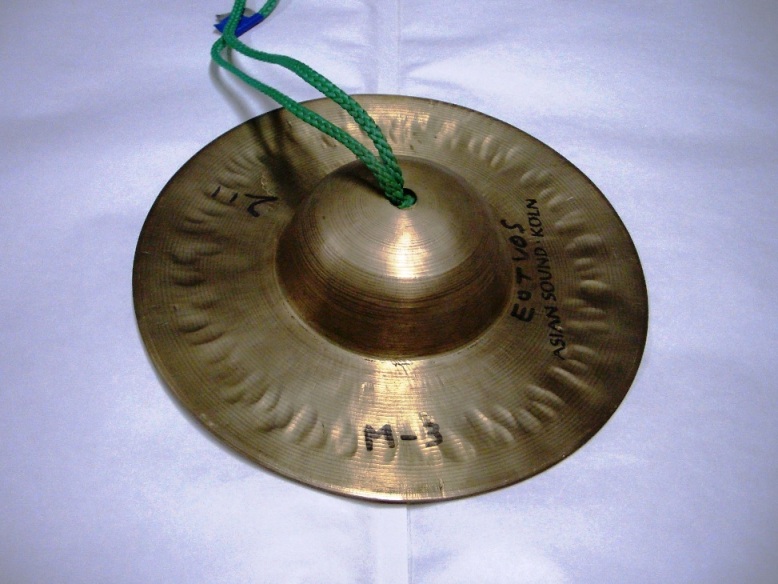
Assamese: তাল,
Deori: চেং-চেং, চ্চেং-চ্চেং,
Hajong: ঝুৰি
Related Idea:
a. Material Noun-Neuter: cymbal, ভোৰতাল...
28. Music(Material Noun-Neuter) an Assamese traditional membranophone instrument which was introduced by Mohapurux Srimonto Sankardev for the first time. One potter from Kopilimuk designed it for the first time with technical inputs from Srimonto Sankardev. It is traditional but classical instrument, define by classical tals (beat). Much more similar to Mridongo which is said to be Divine Instrument(DEVA BADTYA).
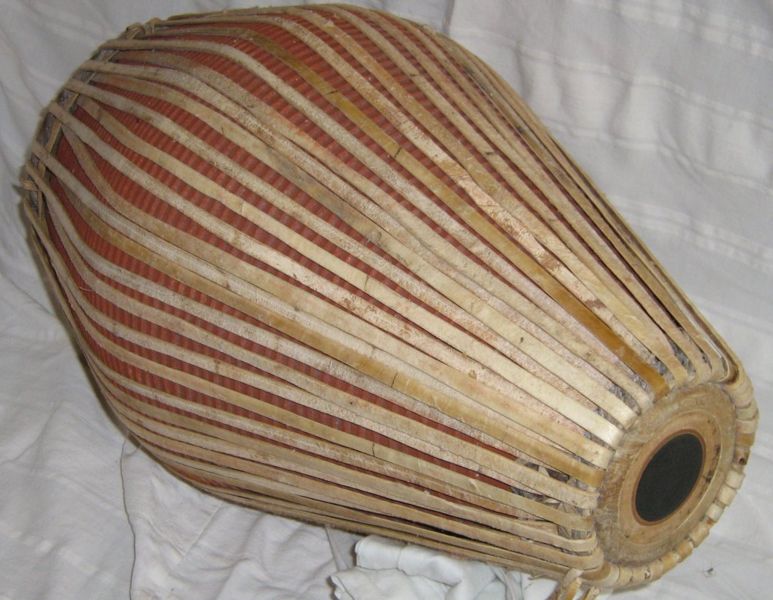
Assamese: খোল,
Meeteilon: pung,
Karbi: ingtongpo
Super Idea:
a. Material Noun-Neuter: drum, ঢোল, মৃদং, মৃদঙ্গ, दल, खाम...
29. Music(Material Noun-Neuter) Gagana is a small, split-bamboo instrument, very finely cut and delicate. It is played by young boys and girls by holding it between the teeth in Bihu. বিহু গীতত ব্যৱহৃত বাহেঁৰে নিৰ্মিত এবিধ সৰু মুখেৰে বজোৱা বাদ্যযন্ত্ৰ
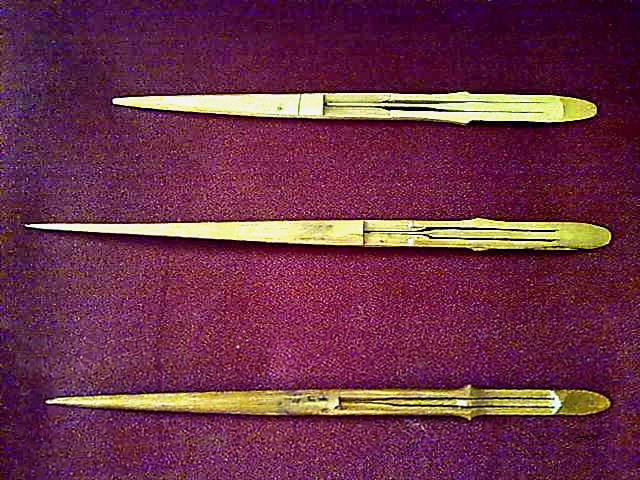
Assamese: গগনা
Sub Idea:
a. Material Noun-Neuter: ramdhan, ৰামধন, ৰামধন গগণা...b. Material Noun: lahari gagana, লাহৰী গগনা, ৰূপহী গগনা...
30. Music(Material Noun-Neuter) a big size gogona, a traditional Assamese harp-like instrument made of bamboo, usually played by boys. এবিধ ডাঙৰ আকাৰৰ গগণা৷ সাধাৰণতে ল’ৰাই বিহুত বজায়৷
Assamese: ৰামধন, ৰামধন গগণা
Related Idea:
a. Material Noun: lahari gagana, লাহৰী গগনা, ৰূপহী গগনা...Super Idea:
b. Material Noun-Neuter: gagana, গগনা...
31. Music(Material Noun) An instrument (gagana) played by girl in bihu. এবিধ ছোৱালীয়ে বজোৱা গগনাৰ নাম ৷
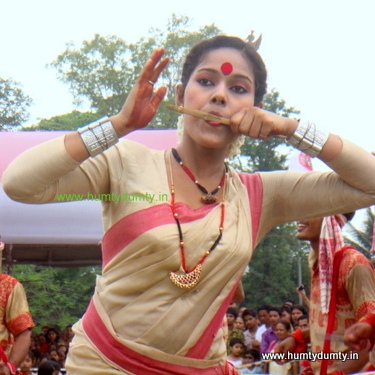
Assamese: লাহৰী গগনা, ৰূপহী গগনা
Related Idea:
a. Material Noun-Neuter: ramdhan, ৰামধন, ৰামধন গগণা...Super Idea:
b. Material Noun-Neuter: gagana, গগনা...
32. Music(Material Noun-Neuter) A musical instrument with two strings used in Assamese folk songs. অসমীয়া লোকগীতত ব্যৱহাৰ হোৱা দুডাল গুণা থকা টোকাৰীৰ দৰে এবিধ বাদ্য যন্ত্ৰ ।
33. Music(Proper Noun-Neuter) a tal of seven beats used in Indian music. ভাৰতীয় উচ্চাংগ আৰু লঘু সংগীতত ব্যৱহাৰ হোৱা সাত মাত্ৰাৰ এবিধ তাল৷ ইয়াৰ ঠেকাঃ তি তি না৷ ধী না৷ ধী না৷ তিনিটা বিভাগ, প্ৰথম বিভাগত তিনি মাত্ৰা আৰু শেহৰ দুটাত দুই মাত্ৰাৰ বোল থাকে৷
34. Music(Common Noun-Masculine) one who plays the piano. পিয়ান’ বজোৱা বা পিয়ান’বাদনত পাৰ্গত লোক৷
Assamese: পিয়ান’বাদক,
Bodo: पियान दामग्रा,
Nepali: पियानो बादक
Related Idea:
a. Material Noun-Neuter: piano, পিয়ান’, ka jingtem, piyano, पियानो...
35. MusicEkasarana Dharma(Proper Noun) The Borgeets (literally: great songs) are devotional songs, set to music and sung in various raga styles. It's written by Sankardev and Madhavdev. The songs themselves are written in the 'Brajavali' language. মহাপুৰুষ শংকৰদেৱ আৰু মাধৱদেৱৰ দ্বাৰা ৰচিত বৈষ্ণৱধৰ্মৰ বিশেষ ৰাগ-ৰাগিনীৰে গোৱা একশ্ৰেণীৰ উপাসনা গীত ৷
এই গীতসমূহ ব্ৰজাৱলী ভাষাত ৰচিত ৷
36. Music(Material Noun-Neuter) A small clay made flute type musical instrument used during Bihu. The shape of the instrument is similar to the shape of thread rolled spindle. প্ৰায় সূতলাহিৰ গঢ়ৰ, ফোঁপোলা আৰু বাঁহীৰ নিচিনা পেটত বিন্ধা থকা ল’ৰা বা ছোৱালীয়ে বিহুগীত পৰিবেশনৰ সময়ত মুখেৰে বজোৱা এবিধ বাদ্যযন্ত্ৰ ৷
37. Music(Material Noun-Neuter) An organlike keyboard instrument that produces tones with free metal reeds actuated by air forced from a bellows. ভিতৰত বায়ু প্ৰৱেশ কৰাই কী-বৰ্ডৰ সহায়ত আঙুলিৰ দ্বাৰা বজোৱা এবিধ বাদ্যযন্ত্ৰ৷
38. PersonalitiesMusicCinema(Proper Noun) Jyoti Prasad Agarwala was a playwright, songwriter, poet, writer and film maker from Assam. He is an Assamese cultural icon, deeply revered for his creative vision and output and is popularly called the Rupkonwar of Assamese culture. In fact, he is regarded as the founder of Assamese cinema for Joymati (1935). Jyoti Prasad Agarwala was born on January 17, 1903 in an Agrawal family, to Paramananda Agarwala and Kiranmoyee Agarwala in Tamulbari Tea Estate. His birthday (January 17) is celebrated as Silpi divas (Artists' Day) in his honor. Jyoti Prasad Agarwala had written around 300 songs, many of which he had set to music himself. Collectively, these songs are called Jyoti xongit. He also written five Plays. His published plays are- Sonit Kunwori, Karengar Ligiri, Lobhita, Rupalim, Nimati Konya. "Luitor Paaror Agnixur" is his only Poetry Collection. He died of cancer on January 17, 1951 at Tamulbari Tea Estate. জ্যোতিপ্ৰসাদ আগৰৱালা অসমৰ গীতিকাৰ, নাট্যকাৰ, কবি আৰু চলচ্চিত্ৰৰ প্ৰণেতা৷ অসমীয়া সংস্কৃতিলৈ তেওঁ আগবঢ়োৱা অফুৰন্ত অৱদানৰ বাবে তেওঁক “ৰূপকোঁৱৰ” হিচাপে আখ্যা দিয়া হয়৷ তেওঁ ১৯৩৫ চনত নিৰ্মান হোৱা প্ৰথম অসমীয়া চলচ্চিত্ৰ “জয়মতী”ৰ জন্মদাতা৷ জ্যোতিপ্ৰসাদ আগৰৱালাৰ জন্ম হয় ১৯০৩ চনৰ ১৭ জানুৱাৰীত তামুলবাৰি চাহ বাগানত৷ তেওঁৰ পিতৃৰ নাম পৰমানন্দ আগৰৱালা আৰু মাতৃ কিৰণময়ি আগৰৱালা৷ তেখেতৰ প্ৰতি শ্ৰদ্ধা জনাই প্ৰতি বছৰে তেখেতৰ জন্ম দিনটো “শিল্পী দিৱস” হিচাপে পালন কৰা হয়৷ তেওঁ ৩০০ মান অসমীয়া গীত (জ্যোতি সংগীত) ৰচনা কৰা উপৰিও পাঁচখন প্ৰকাশিত নাটক- শোণিত কুঁৱৰী, কাৰেঙৰ লিগিৰী, লভিতা, ৰূপালীম, নিমাতি কইনা ৰচনা কৰে৷ তেওঁৰ একমাত্ৰ কবিতাৰ সংগ্ৰহ হ’ল-“লুইতৰ পাৰৰ অগ্নিসুৰ”৷ ১৯৫১ চনৰ ১৭ জানুৱাৰীত তেখেতৰ মৃত্যু হয়৷
39. PersonalitiesMusic(Proper Noun) Bishnu Prasad Rabha was a famous poet, littérateur, dramatist, musician, dancer and an actor, all rolled into one. He is known as Kalaguru. He was born on January 31, 1909 in Dhaka. Bishnu Prasad Rabha wrote many songs, plays and articles. His famous works include "Sonpahi, Mising Coneng, Asomiya Kristir Samu Abhash, and Atit Asom". Bishnu Prasad Rabha died in 20 jun 1969. বিষ্ণুপ্ৰসাদ ৰাভা অসমৰ কবি, সাহিত্যিক, নাট্যকাৰ, সংগীতজ্ঞ, নৃত্যবিদ আৰু অভিনেতা আছিল৷ তেওঁক “কলাগুৰু” নামেৰে অভিহিত কৰা হয়৷ ১৯০৯ চনৰ ৩১ জানুৱাৰীত বাংলাদেশৰ ঢাকাত জন্ম হয়৷ একাধিক গীত, কবিতা আৰু প্ৰৱন্ধ তেওঁ ৰচনা কৰিছিল৷ তেওঁৰ উল্লেখযোগ্য প্ৰকাশিত পুথি হ’ল-“সোণপাহী”, “মিচিং কনেং”, “অসমীয়া কৃষ্টিৰ চমু আভাষ” আৰু “অতীত অসম”৷ ১৯৬৯ চনৰ ২০ জুন তাৰিখে তেওঁৰ মৃত্যু হয়৷
40. MusicHinduism(Material Noun-Neuter) Indian Musical Instrument Damaru is the most common hour-glass drum in India. There are two drumheads on each side of the resonator which are laced together with cord. Near the centre of the lacing are two loose knoted cords. The knots on each end strike both heads to produce a rattling sound. Damru is one of the attributes of several deities and gods (of Hindus), particularly of Shiva. মাজ চিঞা আৰু দুই মূৰ ঘুৰণীয়া আৰু ছালেৰে ছোৱা এবিধ ভাৰতীয় বাদ্য৷ তাক এহাতে লৈ জোকাৰিলে মাজতে জৰীৰে ওলমাই দিয়া এটা বা দুটা গুটিয়ে দুই মূৰে আঘাত কৰি শব্দ কৰে৷ হিন্দু ধৰ্মৰ দেৱতা শিৱৰ এবিধ প্ৰধান বাদ্য৷
41. Music(Material Noun-Neuter) The dhak is a percussion instrument similar to other two-sided drums in India. this instrument used in the time of Durga Puja. দুৰ্গা পূজাৰ সময়ত বজোৱা ঢোলৰ আকৃতিৰ এবিধ বাদ্যযন্ত্ৰ ৷
42. Music(Material Noun-Neuter) Tanpura is a drone instrument. It resembles a sitar except it has no frets. It has four strings tuned to the tonic. The word "tanpura" (tanpoora) is common in the north, but in south India it is called "tambura", "thamboora", "thambura", or "tamboora". The tanpura is known for its very rich sound. There are three main styles; the Miraj style, the Tanjore style and the small instrumental version sometimes called tamburi. এডলীয়া গুণ থকা বীণাৰ দৰে এবিধ বাদ্যযন্ত্ৰ৷
43. Music(Material Noun-Neuter) The Pakhavaj is an Indian barrel-shaped, two-headed drum, the North Indian equivalent to the Southern mridangam. It is the standard percussion instrument in the dhrupad style and is widely used as an accompaniment for various forms of music and dance performances. The pakhavaj has a low, mellow tone, very rich in harmonics. Set horizontally on a cushion in front of the drummer's crossed leg, the larger bass-skin is played with the left hand, the treble skin by the right hand. মৃদংগৰ দৰে এবিধ হিন্দুস্থানী বাদ্যযন্ত্ৰ বিশেষ৷
44. Music(Material Noun-Neuter) A large acustic musical instrument with keyboards.
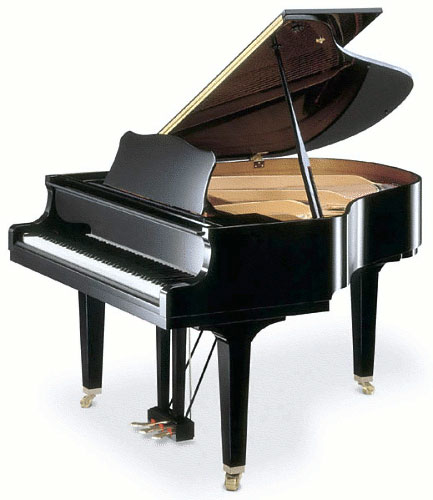
Assamese: পিয়ান’,
Khasi: ka jingtem,
Meeteilon: piyano,
Nepali: पियानो
Related Idea:
a. Common Noun-Masculine: pianist, পিয়ান’বাদক, पियान दामग्रा, पियानो बादक...
45. PersonalitiesMusic(Proper Noun-Masculine) A singer and composer from Assam, India, in the Bollywood and Assamese music scene. The song Ya Ali from the movie Gangster became a superhit in mainland India, the Middle East, and across South Asia. Following the success an Album titled 'Ya Ali Remix Blast' containing remix by DJ Suketu & Aks were released. অসমৰ এজন খ্যাতনামা বৰ্তমান সময়ৰ গায়ক৷ ’ইয়া আলি’নামৰ গানেৰে বলিৱুড জগততো তেওঁ খ্যাতি আৰ্জন কৰিছে৷
46. Music(Abstract Noun) a folk song of mising community of east Assam, India মিচিং সকলে গোৱা লোকগীত
Assamese: ঐনিতম,
Mising: oi-ni:tom,
Nepali: ओइनितम
Related Idea:
a. Common Noun: Miching, Mising, মিচিং, মিৰি, mising-akhei...
47. MusicEkasarana Dharma(Abstract Noun) One who plays drums, specially Khool, Dhool ect. খোল বজাওঁতা, বিশেষকৈ অসমীয়াত ৷
48. MusicEkasarana Dharma(Common Noun-Masculine) One who sings devotional songs of Srimanta Sankardev
Super Idea:
a. Common Noun-Masculine: singer, vocalist, কণ্ঠশিল্পী, গাওঁতা, গানুৱা...
49. Music(Material Noun-Neuter) a kind of beating instrument or drum especially used during religious ceremony, with a rounded base and a wide surface made of leather বিশেষকৈ ধৰ্মীয় অনুস্থানত হাত বা মাৰিৰে বজোৱা এবিধ বহল বাদ্যযন্ত্ৰ
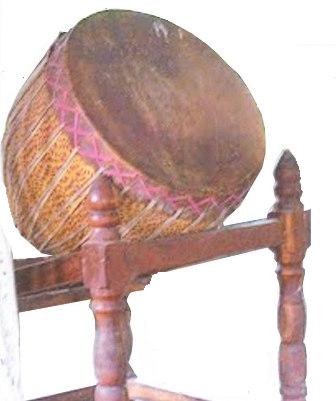
50. MusicReligious-Mythological(Material Noun-Neuter) a kind of beating leather instrument with a round base beaten by sticks, generally used with religious songs লাঠিৰে বজোৱা, তলটো গোলাকাৰ এবিধ চামৰাৰ বাদ্য; সাধাৰণতে ধৰ্মীয় অনুষ্ঠানত বজোৱা হয় ৷
51. Music(Abstract Noun) a system of graphic symbols for depicting tune, rhythm, beat, scale etc. of music. সঙ্গীতৰ সুৰ, তাল, লয়, মাত্ৰা আদি বুজোৱা সাংকেতিক প্ৰথা৷
52. Music(Material Noun-Neuter) an object or musical instrument filled with small pellets that makes rapid succession of short sharp sounds when shaken. ভিতৰত সৰু সৰু টান গুটি ভৰোৱা ধাতুৰ এবিধ যতন বা বাদ্য, যাক লৰালে ঘন-ঘনকৈ টিংটিঙীয়া শব্দ হয়৷
53. Music(Material Noun-Neuter) a tightly stretched cord or wire of a musical instrument বাদ্য-যন্ত্ৰৰ গুণা
54. Music(Common Noun-Common) one singer of a chorus দোহাৰত গীত গোৱা মানুহ
55. Music(Proper Noun-Neuter) a sixteen beat taal used in Indian classical music. ভাৰতীয় শাস্ত্ৰীয় সংগীতত বহুলভাবে ব্যৱহাৰ হোৱা ষোল্ল মাত্ৰাৰ, চাৰিটা ভাগত বিভাজিত তাল৷ প্ৰথম,পঞ্চম আৰু তেৰ মাত্ৰাত তালি, নৱম মাত্ৰাত খালি৷ তিনতালত তিনিবাৰ তালি পৰা বাবেও ইয়াক তিনতাল বোলা হয়৷ তিনতালৰ বোলঃ ধা ধিন ধিন ধা৷ ধা ধিন ধিন ধা ৷ধা তিন তিন তা৷ তা ধিন ধিন ধা৷
56. Music(Material Noun-Neuter) a black, round paste on the skin of tabla, dholok etc. to create and sustain vibration. তবলা, ঢোলক আদি অৱনদ্ধ বাদ্যৰ চামৰাৰ ওপৰত মাজ ভাগত বা একাষত থকা ক’লা, ঘুৰণীয়া লেপন৷
57. Music(Abstract Noun) a recurrent, uniform(i.e. fixed matras) and rhythmic pattern of beats in Indian music, both folk and classical. সংগীতত একমানবিশিষ্ট নিৰ্দিষ্ট মাত্ৰাৰ বোলৰ সুৰীয়া, লয়যুক্ত বাৰংবাৰ পুনৰাবৃত্তি৷ভাৰতীয় উপমহাদেশৰ লোক আৰু শাস্ত্ৰীয়- সকলো ধৰণৰ সংগীতেই কোনো নিৰ্দিষ্ট তালত আবদ্ধ৷ কাহাৰবা(৮ মাত্ৰা), দাদৰা(৬মাত্ৰা), খেমতা(৬ মাত্ৰা), তিনতাল(১৬মাত্ৰা), ৰূপক(৭ মাত্ৰা), ঝাপতাল(১০মাত্ৰা),একতাল(১২ মাত্ৰা) আদি ভাৰতীয় সংগীতত বহুল প্ৰচলিত তাল৷
58. Music(Proper Noun-Neuter) a form of Indonesian music. ইণ্ডোনেছিয়াৰ এবিধ সংগীত৷ঘাত বাদ্যৰ ঐক্যতান বাদন৷
59. Music(Abstract Noun) a medium tempo or octave (faster than vilambit but slower than the drut)in Indian classical vocal or instrumental performance, usually towards the middle of the performance. ভাৰতীয় শাস্ত্ৰীয় গায়ন বা বাদনৰ (সাধাৰণতে মাজভাগত) বিলম্বিত লয়তকৈ খৰকৈ কিন্তু দ্ৰুত লয়তকৈ লাহে লাহে তালত কৰা পৰিৱেশন বিশেষ৷
60. Music(Abstract Noun) the 'words' played in the tabla or similar instruments. তবলা আদি অৱনদ্ধ বাদ্যত বজোৱা শব্দসমূহ৷
61. Music(Material Noun-Neuter) a drum-like musical instrument especially played during war. যুদ্ধৰ সময়ত বজোৱা মৃদঙ্গ-সদৃশ বাদ্য বিশেষ।
62. Music(Material Noun-Neuter) an instrument for playing string instruments like the violin or cello ভায়লীন আদি বজাবলৈ ব্যৱহাৰ কৰা এবিধ আহিলা৷
63. Music(Material Noun-Neuter) A treble instrument usually made of copper, like the trumpet with less expanded bell and shorter tube, more conical with a very high frequency node. Generaly used for signaling in the Army. তীক্ষ্ণ ধ্বনি বিশিষ্ট পিতলৰ পেপা , সাধাৰণতে সৈন্যবাহিনীত ধ্বনিৰে সংকেত দিবলৈ ব্যৱহৃত হয়৷
64. Music(Abstract Noun) The seven notes of the swaras (scales) of Indian music viz. shadja, rishabh, gandhar, madhyam, pancham, dhaivat and nishad. They are shortened to Sa, Ri (Carnatic) or Re (Hindustani), Ga, Ma, Pa, Dha, and Ni and written S, R, G, M, P, D, N. Collectively these notes are called as the sargam. ভাৰতীয় সংগীতৰ সাতোটা মূল স্বৰ-চাদজা, ৰিষভ, গান্ধাৰ, মধ্যম, পঞ্চম, ধাইভাট আৰু নিষাদ, চমুকৈ চা, ৰে, গা, মা, পা, ধা, নি৷ সমূহীয়াকৈ এই স্বৰখিনিক স্বৰগম বোলা হয়৷
65. Music(Abstract Noun) an experimental music genre that combines, synthesizes two or more genres of music. দুটা বা ততোকৈ অধিক সংগীতৰ প্ৰকাৰ লগ লগাই পৰীক্ষামূলক ভাবে সৃষ্টিকৰা এক নতুন প্ৰকাৰৰ সংগীত৷
66. Music(Common Noun-Common &/or Masculine) a person who is proficient in playing the guitar. গীটাৰ বজোৱাত পাৰদৰ্শী লোক৷
67. Music(Proper Noun-Neuter) One of the Indian musical mode. ভাৰতীয় সংগীতৰ এটা ৰাগ।
68. Music(Material Noun-Neuter) a simple aerophone, an instrument which produces sound from a stream of forced air. It may be mouth-operated, or powered by air pressure, steam, or other means. মুখেৰে ফুৱাই বজোৱা পেঁপাৰ দৰে এবিধ বাদ্য৷
69. Music(Abstract Noun) a long tune in between rhyming or singing of religious songs নাম গোৱাৰ মাজে-মাজে টনা দীঘল ৰাগিনী
70. Music(Material Noun-Neuter) a kind of long flute, one of Indian musical instruments এক ধৰণৰ দীঘল বাঁহী, এবিধ ভাৰতীয় বাদ্য-যন্ত্ৰ
71. Music(Proper Noun-Neuter) a taal of ten beats used in Indian classical (and light) music. ভাৰতীয় উচ্চাংগ (আৰু লঘু সংগীতত) ব্যৱহাৰ হোৱা দহ মাত্ৰাৰ তাল৷ ঠেকাৰ বোলটো এনেধৰণৰঃ ধি না/ ধি ধি না / তি না/ ধি ধি না/
72. Music(Proper Noun-Neuter) a taal of six beats used in Indian classical and light music. ভাৰতীয় উচ্চাংগ আৰু লঘু সংগীতত ব্যৱহাৰ হোৱা ছয় মাত্ৰাৰ তাল৷
73. Music(Abstract Noun) an ornamental note or 'bol' in vocal and instrumental Indian music. This involves variations of the pitch of a note. ভাৰতীয় কণ্ঠ আৰু বাদ্য সংগীতত ব্যৱহাৰ হোৱা এক আলংকাৰিক প্ৰয়োগ৷গাওঁতে বা বজাওঁতে শব্দ সৃষ্টিৰ তাৰতম্যৰে গমক প্ৰয়োগ কৰা হয়৷
74. Music(Proper Noun-Neuter) a taal of eight beats, used in semi-classical, light Indian music ভাৰতীয় লঘু সংগীতত ব্যৱহাৰ হোৱা আঠ মাত্ৰাৰ তাল৷ ইয়াৰ ঠেকাৰ বোলঃ ধা গে না তি না ক ধি না
75. Music(Proper Noun-Neuter) a 'dhun' used in Indian classical music. ভাৰতীয় শাস্ত্ৰীয় সংগীতত ব্যৱহাৰ হোৱা এবিধ ধূণ৷
76. Music(Abstract Noun) the first part of a song which is often repeated throughout the song গীতৰ প্ৰথম আৰু বাৰে বাৰে পুনৰাবৃতি হোৱা কথা ভাগ৷
77. Music(Proper Noun-Neuter) a taal of twelve beats used in Indian classical (and semi classical) music. ভাৰতীয় শাস্ত্ৰীয় আৰু অৰ্ধ-শাস্ত্ৰীয় সংগীতত ব্যৱহাৰ হোৱা বাৰ মাত্ৰাৰ এটা তাল৷ ঠেকাৰ বোলঃ ধিন ধিন ধাগে তেৰেকেতে তুন না কৎ তা ধাগে তেৰেকেতে ধিন না
78. PersonalitiesMusic(Proper Noun-Feminine) a very famous and popular female voice in Assamese music. অসমৰ এগৰাকী বিখ্যাত, জনপ্ৰিয় আৰু সুৱদী কণ্ঠৰ গায়িকা৷ ’আলি ঢাকি পৰ শালিকী’, ’পীৰিতি নামৰে তিনিটি আখৰ ঐ’ আদি তেখেতৰ অতি জনপ্ৰিয় গীতৰ অন্যতম৷
79. Music(Abstract Noun) a style of playing the tabla in accordance with a particular gharana e.g. Delhi baaj. Luknow baaj etc. ঘড়ানা অনুসৰি তবলাৰ এক বাদন শৈলী৷যেনেঃ দিল্লী বাজ, লক্ষ্ণৌ বাজ, বেনাৰস বাজ আদি৷
80. Music(Material Noun-Neuter) small, slightly long and round wooden dowels used to control the tension. তবলাৰ ওপৰৰ পৰা তললৈ থকা চামৰাৰ ৰছী বিলাক ডাঙি চালখন প্ৰয়োজন অনুসৰি টান-ধিলা কৰিবলৈ ব্যৱহাৰ কৰা কাঠৰ দুই ইঞ্চিমান দীঘল সৰু ঘুৰণীয়া টুকুৰা৷
81. Music(Proper Noun-Neuter) an Indian melodious percussion instrument which consists of a set of ceramic bowls tuned with water. The bowls are played by beating on the edge with two beaters one in each hand. কেইবাটাও চীনা মাটিৰ বাটিত পানী ভৰাই বাটিৰ দাঁতিৰ দুয়োহাতে দুদাল মাৰিৰে আঘাট কৰি বজোৱা এবিধ ভাৰতীয় ঘাত বাদ্য৷
82. Music(Common Noun-Common &/or Masculine) a person who decides and manages music in a play, movie etc. নাটক, বোলছবি আদিত কি, কেনেকুৱা ধৰণৰ সংগীত ক’ত, কেনেকৈ ব্যৱহাৰ হ’ব, (কোনে গীত গাব), আৱহ সংগীতৰ ব্যৱহাৰ কেনেকুৱা হ’ব আদি আৰু অন্যান্য আনুসাংগিক বিষয় ঠিৰাং আৰু পৰিচালনা কৰা ব্যক্তি৷
83. Music(Proper Noun-Neuter) a classic text on the tabla and some aspects of Indian classical music by Paban Bordoloi. পৱন বৰদলৈৰ মূলতঃ তবলা আৰু ভাৰতীয় শাস্ত্ৰীয় সংগীতৰ কিছু বিষয়ক লৈ ৰচিত এখন অসমীয়া গ্ৰন্থ৷
84. Music(Verbal Noun) a public performance of music by one person or a group. এজন বা কেইবাজনো লগ হৈ গীত, বাদ্য বা নৃত্যৰ (একেলগে বা বেলেগে বেলেগে) ৰাজহুৱা পৰিৱেশন কৰা৷
85. Music(Abstract Noun) A voice exercise; singing scales or runs to the same syllable একেখিনি গীত বিভিন্ন সুৰত গোৱা কণ্ঠৰ অনুশীলন৷
86. Music(Common Noun-Common) a superior singer with great voice quality. সুমধুৰ মাতেৰে উচ্চখাপৰ গায়ক৷
87. Music(Material Noun-Neuter) (also known as Shata-tantri Veena) a stringed instrument indigenous to Kashmir as a folk instrument. Pandit Shiv Kumar Sharma elevated it to a classical instrument through major changes in design and structure of the instrument and playing style. It is made of maple or walnut wood and shaped like trapezoid and is played with a pair of curved wooden mallets. কাশ্মীৰৰ প্ৰাচীন লোকবাদ্য৷ ইয়াৰ গাঁথনি, ৰূপ আৰু বজোৱাৰ শৈলীৰ আমূল পৰিবৰ্তনেৰে পণ্ডিত শিৱ কুমাৰ শৰ্মাই ইয়াক ভাৰতীয় শাস্ত্ৰীয় বাদ্যলৈ উন্নীত কৰে৷আগতে ইয়াক শত তন্ত্ৰী বীণাও বোলা হৈছিল৷
88. Music(Material Noun-Neuter) Indian stringed instrument, part of classical music. Pandit Vishwa Mohan Bhatt developed this hybrid slide guiter and added it to Indian classical instruments. ভাৰতীয় শাস্ত্ৰীয় সংগীতৰ এবিধ গীটাৰৰ সৈতে কিছু মিল থকা তন্ত্ৰী বাদ্য৷পণ্ডিত বিশ্বমোহন ভাটে এই বাদ্যক বিভিন্ন বিকাশৰ মাজেৰে আনি শাস্ত্ৰীয় বাদ্যৰ মৰ্যদা দিয়ে৷
89. Music(Common Noun-Neuter) a poetic, musical expression of love and pain in rhyming couplets and refrains with each line sharing the same meter.Of many types of gazals the most famous categories are romantic ghazals and sharaabi ghazals. It originated in Iran in the 10th century A.D. Jagjit Singh, Pankaj Udhas, Ghulam Ali, Manhar udhas some among the greatest gazal singers of India. Many attribute the origin of Indian gazals to Mirza Galib. প্ৰেম, বিৰহ, সুখ, বেদনা আদিক লৈ ৰচা আৰু গোৱা এক সুন্দৰ কাব্যিক, সাংগীতিক প্ৰকাশ৷ৰোমান্টিক আৰু চাৰাবী গজল গজলৰ দুই ঘাই বিভাগ৷পঙ্কজ উধাছ, জগজিৎ সিং, গোলাম আলী আদি বিখ্যাত ভাৰতীয় গজল গায়ক৷মিৰ্জা গালীবক ভাৰতীয় গজলৰ বাটকটীয়া বুলি মনা হয়৷
90. Music(Abstract Noun) a slow tempo, speed (or octave) in Indian classical vocal or instrumental performance, usually at the beginning. This performance is in some taal. ভাৰতীয় শাস্ত্ৰীয় গায়ন বা বাদনৰ (সাধাৰণতে আৰম্ভণিতে) ধীৰ গতিত, তালত কৰা পৰিৱেশন বিশেষ ৷
91. Music(Common Noun-Neuter) a filler sound in the beginning or middle of some songs. It does not have meaning but is still in taal and laya of the song. কোনো কোনো গীতৰ আৰম্ভণি বা মাজত থকা খালী ঠাই পূৰোৱা, সুৰ-তালত থকা কিন্তু অৰ্থ নথকা শব্দ বিশেষ৷
92. Music(Proper Noun-Neuter) traditional folk dance of Vrindaban. It depicts the scenes of Holy and the `leela` of Lord Krishna and Radha. বৃ্ন্দাবনৰ পাৰম্পৰিক, জনপ্ৰিয় লোকনৃত্য৷ নৱৰাত্ৰিৰ সময়ত ফাকুৱা আৰু শ্ৰীকৃষ্ণৰ ৰাসলীলা প্ৰদৰ্শন কৰি পৰম্পৰাগত সুন্দৰ সাজ-পোচাকেৰে পুৰুষ, মহিলা উভয়ে নাচে৷ দুয়োহাতত লোৱা দুডাল ৰঙীন বাঁহৰ মাৰিৰে সঙ্গীৰ বাঁহৰ মাৰিত টুকুৰিয়াই টুকুৰিয়াই সঙ্গীতৰ তালে-তালে চক্ৰাকাৰে ঘূৰি ঘূৰি নচা এই নৃত্য অতি আকৰ্ষণীয় ৷
93. Music(Material Noun-Neuter) the right wooden drum of the tabla. তবলাৰ সাধাৰণতে সোঁহাতেৰে বজোৱা কাঠৰ ভাগটো৷
94. Music(Abstract Noun) fast tempo or octave or laya, performed after the madhya laya in Indian classical music, vocal or instrumental. The drut laya also marks the climax of the performance. ভাৰতীয় শাস্ত্ৰীয় সংগীতত মধ্যলয়ৰ পাছত (অতি)খৰ গতিত পৰিৱেশন গায়ন বা বাদন৷বিলম্বিত লয়ৰ গতিৰ মান এক বুলি দৰিলে দ্ৰুত লয়ৰ গতিৰ মান দুই, তিনি বা চাৰি গুণ হ’ব পাৰে৷
95. Music(Abstract Noun) initial words of a children song. সৰু ল’ৰা-ছোৱালীয়ে খেলা এবিধ ওমলা খেলত গোৱা সুৰীয়া শাৰীৰ অংশ বিশেষ৷ অলং দলং খেলিছে, ৰজা ৰাণী আহিছে।
96. Music(Proper Noun-Feminine) one of the most well received singers of Assamese music in and from the sixties. Undoubtedly she was one of the sweetest voices in Assam. Some of the most famous among her many songs are: 'Sithi palo porhi salo', 'xondhiyar akaxot bogoli ure' etc. পঞ্চাশ, ষাঠীৰ দশকত মিঠা, সুমধুৰ কন্ঠেৰে অসমীয়া সংগীতক এক বিশেষ মাত্ৰা দিয়া আৰু শ্ৰোতাক মুগ্ধ কৰা কেইটামান চিৰসেউজ গানৰ গায়িকা৷ তেখেতৰ শ্ৰেষ্ঠ গীত কেইটামান হৈছেঃ সন্ধিয়াৰ আকাশত বগলী উৰে, আইৰে ঘৰলৈ মনতে পৰে; চিঠি পালোঁ পঢ়ি চালোঁ এই তুমি পাবাহি কিযে কৰোঁ হায় চুলি বান্ধো, নে হাহোঁ নে ৰান্ধো তোমালৈ; অ’ ফুল অ’ ফুল নুফুল কিয়, বগলী এ সবাহলৈ নগলি কিয় আদি৷
97. Music(Abstract Noun) the fifth sound of the seven primary sounds of Indian (classical) music. ভাৰতীয় (শাস্ত্ৰীয়) সংগীতৰ সপ্তম সুৰৰ (বা সুৰ-সপ্তকৰ)পঞ্চম স্বৰ/ ধ্বনি৷
98. Music(Abstract Noun) the sixth sound of the seven primary sounds of Indian (classical)music. ভাৰতীয় (শাস্ত্ৰীয়) সংগীতৰ মূল সপ্তম স্বৰৰ (সুৰ-সপ্তক) ষষ্ঠটো৷
99. Music(Abstract Noun) the third sound of the seven primary sounds of Indian (classical)music. sa, re, ga, ma, pa, dha, ni ভাৰতীয় (শাস্ত্ৰীয়)সংগীতৰ সুৰ-সপ্তকৰ (মূল সাতটা স্বৰ)তৃতীয়টো৷
100. Music(Abstract Noun) the first of the seven primary sounds of Indian (classical) music. ভাৰতীয় (শাস্ত্ৰীয়)সংগীতৰ সুৰ-সপ্তকৰ (মূল সাতটা স্বৰ)প্ৰথমটো৷ সপ্ত-সুৰঃ চা, ৰে, গা, মা, পা, ধা, নি
101. Music(Abstract Noun) the seventh of the seven primary sounds of Indian classical music. ভাৰতীয় (শাস্ত্ৰীয়)সংগীতৰ সুৰ-সপ্তকৰ (মূল সাতটা স্বৰ)সপ্তমটো৷স্বৰ সমূহঃ চা, ৰে, গা, মা, পা, ধা, নি
102. PersonalitiesMusic(Proper Noun-Masculine) An Indian ghazal singer, composer, music director, activiist and entrepreneur. Known as "The Ghazal King" he gained acclaim together with his wife, another renowned Indian ghazal singer Chitra Singh. Jagjit Singh was born in Sri Ganganagar, Rajasthan. He has sung in Punjabi, Hindi, Urdu, Bengali, Gujarati, Sindhi and Nepali languages. He was awarded India's third highest civilian honour, the Padma Bhushan, in 2003. He died on 10 October 2011 at the age of 70 in Mumbai at Lilavati hospital. জগজিৎ সিং ভাৰতৰ এজন সুপ্ৰসিদ্ধ গজল গায়ক আৰু সংগীত বিশাৰদ৷ গজলৰ যাদুৰে তেওঁ দেশবাসী আৰু বিদেশৰ শ্ৰোতাকো মোহাচ্ছন্ন কৰি ৰাখিছিল৷ পদ্মভূষণ সন্মানেৰে সন্মানিত সিঙে হিন্দীৰ উপৰি উৰ্দু, পাঞ্জাবী, গুজৰাটী আৰু নেপালী ভাষাটো গীত গাইছিল৷ গজল সম্ৰাট ৰূপে খ্যাত জগজিৎ সিঙক ভাৰতৰ আধুনিক গজলৰ এজন অগ্ৰদূত বুলি গণ্য কৰা হয়৷ ১৯৪১ চনৰ ৮ ফেব্ৰুৱাৰীত ৰাজস্থানৰ শ্ৰীগংগা নগৰত জন্ম হয়৷ নিজকে এজন গায়ক হিচাপে প্ৰতিষ্ঠা কৰিবলৈ আগবঢ়াৰ সময়খিনিতে জগজিতৰ গজল গায়িকা চিত্ৰা সিঙৰ লগত চিনাকী হয় আৰু পাছলৈ বিবাহপাশত আৱদ্ধ হয়৷ দুয়ো গজলৰ জৰিয়তে যথেষ্ট খ্যাতি অৰ্জন কৰে৷ ২০১১ চনৰ ২৩ ছেপ্টেম্বৰত মগজুৰ ৰক্তক্ষৰণৰ হোৱাত মুম্বাইৰ লীলাৱতী হাস্পতালত ভৰ্তি কৰা হয়৷ শেষত এই ৰোগৰ বাবেই ২০১১ চনৰ ১০ অক্টোবৰত পুৱা ৮.১০ বজাত শেষ নিশ্বাস ত্যাগ কৰে৷
103. PersonalitiesMusic(Proper Noun-Masculine) a reputed and popular ghazal singer of India. He was awarded the Padmashree in 2006 for his outstanding contribution to Indian music. বিখ্যাত ভাৰতীয় গজল গায়ক৷ তেখেতক ২০০৬ চনত পদ্মশ্ৰী উপাধিৰে সন্মানিত কৰা হয়৷
104. Music(Proper Noun-Neuter) a raga in Indian classical music. This raga is supposed to be able to bring rain. ভাৰতীয় শাস্ত্ৰীয় সংগীতত ব্যৱহাৰ হোৱা এটা ৰাগ৷ এই ৰাগে বৰষুণ আনিব পাৰে বুলি বিশ্বাস কৰা হয়৷
105. Music(Material Noun-Neuter) a war drum. বিজয়সূচক ঢোল জাতীয় বাদ্য বিশেষ৷
106. Music(Proper Noun-Masculine) one of the finest voices in Assamese music with magnetic effect. আকাশবাণী ডিব্ৰুগড় কেন্দ্ৰৰ পৰা চুম্বকীয় কণ্ঠেৰে শ্ৰোতাৰ মনমোহা এজন অন্যতম শ্ৰেষ্ঠ আৰু জনপ্ৰিয় অসমীয়া গায়ক৷
107. Music(Common Noun-Common &/or Masculine) a musician expert in beating a pakhwaj পাখোৱাজ বজোৱাত পাকৈত বাদ্যযন্ত্ৰী
108. Music(Verbal Noun) simultaneous flourish or striking up all the musical instruments at the end of each division or part of musical performance তাল-খোল বজাই গোৱা গীত-বাদ্যৰ এক আধ্যাৰ সামৰণিত সকলো বাদ্য একেলগে বজোৱা কাৰ্য্য
109. Music(Common Noun-Neuter) Musical instruments used traditionally from ancient times among a group of people কোনো জনগোষ্ঠী বা ব্যক্তিসমূহৰ মাজত প্ৰাচীনকালৰ পৰা পৰম্পৰাগতভাৱে প্ৰচলিত বাদ্যযন্ত্ৰ
110. Music(Verbal Noun) the act of playing a musical instrument বাদ্য যন্ত্ৰ বজোৱা কাৰ্য্য
111. Music(Proper Noun-Feminine) One of the queens of King Dasharatha, mother of Laxman. (ৰামায়ন) অযোধ্যাৰ ৰজা দশৰথৰ পাটৰাণী, লক্ষণৰ মাক
112. Music(Abstract Noun) An Indian musical mode. ভাৰতীয় সংগীতৰ ৰাগ বিশেষ৷
113. Music(Material Noun-Neuter) a musical instrument with only one string, resembling a veena এডাল মাখোন তাঁৰ থকা বীণা-জাতীয় বাদ্য-যন্ত্ৰ৷
114. Music(Abstract Noun) One of the `taal` or tune of Indian music হিন্দুস্তানী সংগীতৰ তাল-বিশেষ৷
115. Music(Proper Noun-Neuter) A `ragaa` of Borgeet বৰগীতৰ এটা ৰাগ৷
116. Music(Abstract Noun) rhythmic rise and fall or modulation of voice in music সঙ্গীতত সপ্তসুৰৰ উঠা-নমা অৰ্থাৎ গাওঁতাৰ কণ্ঠৰ নিয়ন্ত্ৰিত প্ৰকাশ
117. Music(Proper Noun-Neuter) a raga used in Borgeet. বৰগীতৰ এক ৰাগ৷
118. Music(Material Noun-Neuter) the end of a drum beaten by the right hand খোল, মৃদঙ্গ আদি বাদ্যৰ সোঁহাতেৰে বজোৱা মূৰ
119. Music(Material Noun-Neuter) the end of a drum beaten by the left hand খোল, মৃদঙ্গ আদি বাদ্যৰ বাওঁহাতেৰে বজোৱা মূৰ
120. Music(Verb-Trans.) to write music or add tune to the lyrics of a song গীতৰ কথাত সুৰ সংযোগ কৰ্ বা সংগীত ৰচনা কৰ্
121. Music(Common Noun-Common) a group of performers on various musical instruments, including especially stringed instruments of the viol class, clarinets and flutes, cornets and trombones, drums, and cymbals, for playing music, as symphonies, operas, popular music, or other compositions. বিভিন্ন বাদ্যযন্ত্ৰত জনপ্ৰিয় গীতৰ সুৰ বজাই শ্ৰোতাৰ মনোৰঞ্জন কৰি ফুৰা সংগঠিত শিল্পীদল
122. Music(Abstract Noun) A class of devotional song in folk music of Assam. দেহ বা শৰীৰটো অসাৰ এনে ধাৰণাৰ ভিত্তিত গোৱা এক শ্ৰেণীৰ লোকগীত৷
123. Music(Proper Noun-Neuter) A dance form related to Hindu God Shiva
শিৱৰ লগত সম্পৰ্কযুক্ত দুটি নৃত্যৰ নাম হ`ল তাণ্ডৱ আৰু লাস্য৷ লাস্য অংশটি পাৰ্বতী মানে মহিলাই নাছে৷
124. Music(Proper Noun-Neuter) One of the taal (rhythmic pattern of beats) in indian music. ভাৰতীয় সংগীতৰ এবিধ তাল
125. Music(Proper Noun-Neuter) One of the taal (rhythmic pattern of beats) in indian music. ভাৰতীয় সংগীতৰ এবিধ তাল
126. Music(Proper Noun-Neuter) One of the taal (rhythmic pattern of beats) in indian music. ভাৰতীয় সংগীতৰ এবিধ তাল
127. Music(Proper Noun-Neuter) One of the taal (rhythmic pattern of beats) in indian music. 6 beats taal ভাৰতীয় সংগীতৰ এবিধ তাল ৷ ৬ মাত্ৰাৰ তাল৷
128. Music(Material Noun-Neuter) A plectrum which is used for several Iranian and Indian string instruments. চেতাঁৰ বা তেনে কিছুমান তাঁৰৰ যন্ত্ৰ বজাবলৈ ব্যৱহাৰ কৰা আঁঙুঠি৷
129. Music(Abstract Noun) Thaats is a mode in northern Indian or Hindustani music. It always has seven different pitches (called swara) and are the basis for the organization and classification of ragas in North Indian classical music. ভাৰতীয় শাস্ত্ৰীয় সংগীতৰ ভেটি৷ ঠাটত সাতটা স্বৰ থাকে৷ ইয়াৰ ভিত্তিতেই ৰাগসমূহ চিনাক্ত বা শ্ৰেণীবিভাগ কৰা হয়৷
130. Music(Abstract Noun) A well define `melody` of Indian music. ভাৰতীয় সংগীতৰ ৰাগ বিশেষ৷
131. Music(Abstract Noun) A well define `melody` of Indian music. ভাৰতীয় সংগীতৰ ৰাগ বিশেষ৷
132. Music(Abstract Noun) A well define `melody` of Indian music. ভাৰতীয় সংগীতৰ ৰাগ বিশেষ৷
133. Music(Abstract Noun) Name of a particular raga (some well defined melodies in Indian music) এক ৰাগ বিশেষ৷ মাধৱদেৱৰ বৰগীতত এই ৰাগপোৱা যায়৷
134. Music(Abstract Noun) Name of a particular raga( some welldefined melodies in indian music) এক ৰাগ বিশেষ শংকৰদেৱৰ প্ৰথম বৰগীতটো এই ৰাগত বন্ধা আছে৷
135. Music(Abstract Noun) A well define `melody` of Indian music. ভাৰতীয় সংগীতৰ ৰাগ বিশেষ৷
136. Music(Abstract Noun) A kind of song in marriage ceremony.
বিয়াত গোৱা এক প্ৰকাৰৰ গীত ৷
137. Music(Material Noun-Neuter) A musical instruments that you hold in both hands to produce sounds
এবিধ বাদ্য যন্ত্ৰ
138. Music(Common Noun-Neuter) a group of five people playing music or singing together
পাছজনীয়া সংগীতৰ দল
139. Music(Proper Noun-Neuter) a small electronic musical instrument played by touching its keyboard with a stylus
140. Music(Proper Noun-Common &/or Masculine) a way of representing musical notes on paper by showing the position of the fingers on a musical instrument rather than actual notes
কোনো বাদ্য যন্ত্ৰ বজোৱাৰ নিৰ্দেশৰ সাংকেতিক লিখন
141. Music(Material Noun-Neuter) any of various pointed, pen-shaped instruments used in drawing, artwork, etc
লিখিবলৈ বা চিত্ৰাঙ্কণ কৰিবলৈ ব্যৱহাৰ কৰা কলমৰ দৰে জোঙা আগ থকা এক আহিলা৷
142. Music(Material Noun-Neuter) a musical instrument of the Tai-Buddhist in Assam.
টাই-বৌদ্ধ সকলৰ এবিধ বাদ্য৷
143. Music(Common Noun-Common &/or Masculine) one who is skilled in music
সঙ্গীতৰ ক্ষেত্ৰত বিশেষ ব্যুৎপত্তি থকা ব্যক্তি
Assamese: সংগীতজ্ঞ
Different POS:
a. Abstract Noun: music, গান-বাজনা, সংগীত, खबाम, देंखोमु...
144. Music(Material Noun-Neuter) a musical instrument of the Tai-Buddhist in Assam.
টাই-বৌদ্ধ সকলৰ এবিধ বাদ্য৷
145. Music(Abstract Noun) the deepest tone of Indian musical mode
পেটৰ পৰা উচ্চাৰিত হৈ ওলোৱা সংগীতৰ এটা গভীৰ সুৰ
146. Music(Verb-Trans.) to sing in long tune like opera, jazz, classical music
147. Music(Material Noun-Neuter) the family of instruments in which sound arises from the striking of materials with sticks, hammers, or the hands. হাত, লাঠি আৰু হাতুৰীৰে আঘাত কৰাৰ ফলত শব্দ সৃষ্টি হোৱা বাদ্যযন্ত্ৰ ৷
148. Music(Common Noun-Common) a player of a percussion instrument, especially in an orchestra. বিশেষকৈ সুৰ-বাহিনীত ঘাত-বাদ্য বজাওঁতা লোক ৷


